The Kings of Kruger.
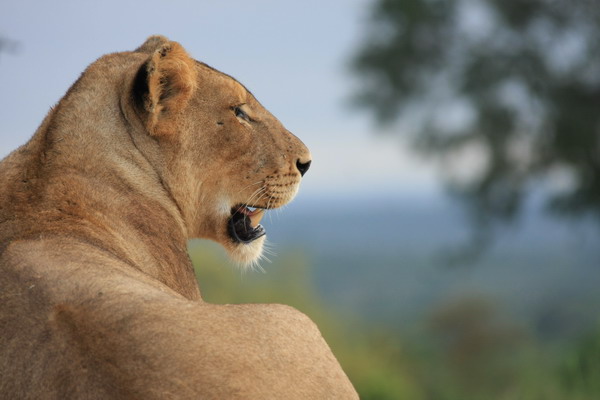
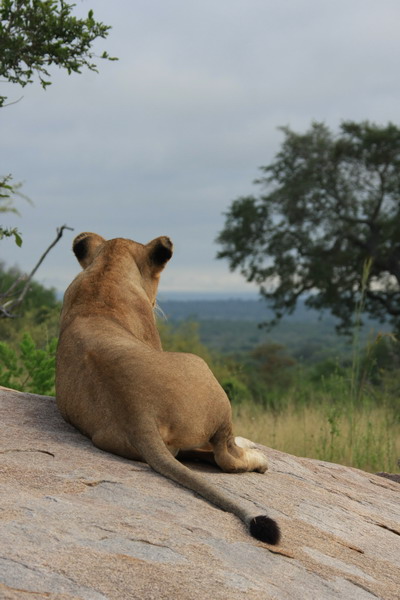
She was surveying her domain.
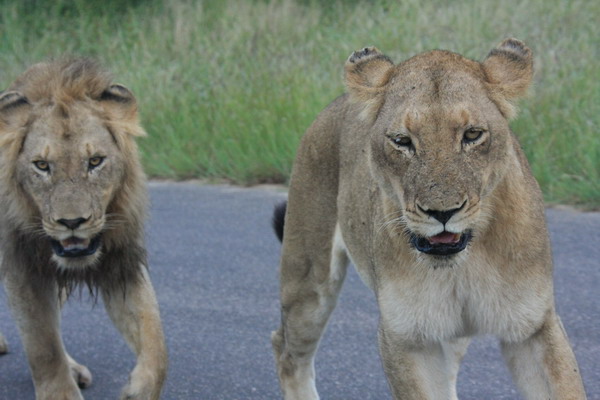
Lions have no fear of people. Although we were in our vehicle here, the window was rolled down and there was nothing stopping them from taking a swipe at us. However, we heard that the smell of the petroleum covers the human scent. I don’t know if that’s true or not, but the lions certainly weren’t fazed by our presence.
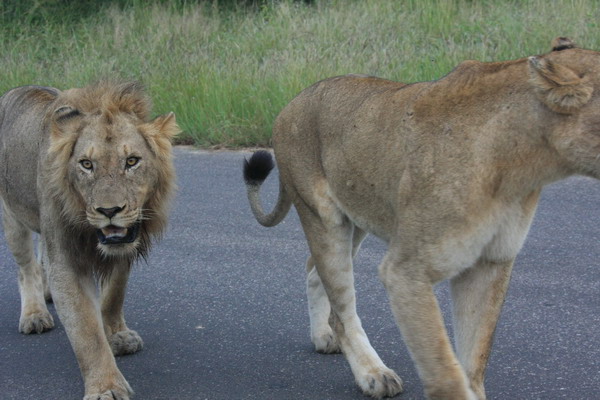
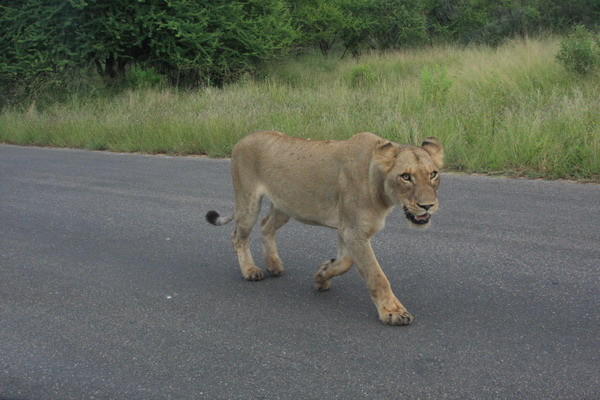
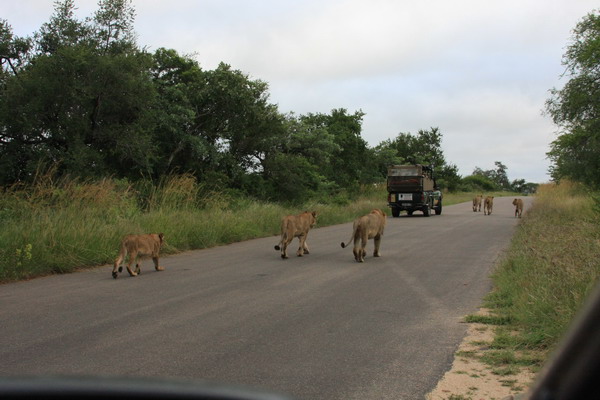
This gives a little better perspective on the lions just walking down the road, oblivious to the humans.
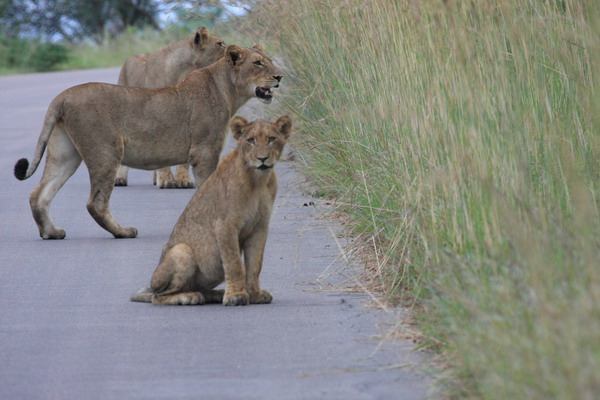
Intently watching the grass…
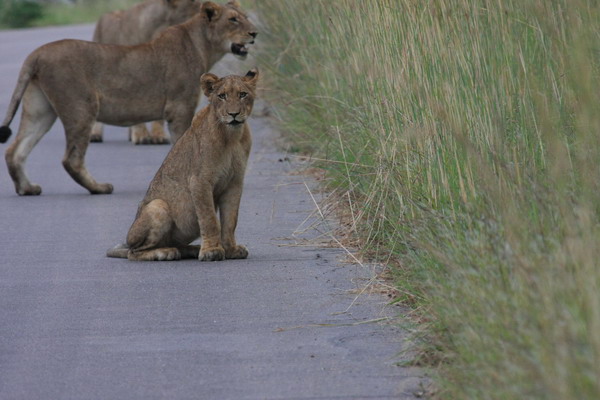
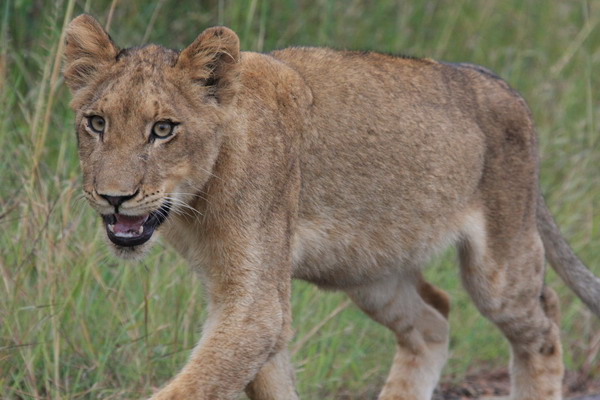
This cub was very distraught. He got separated from the rest of the pride and was trying to find them quickly.
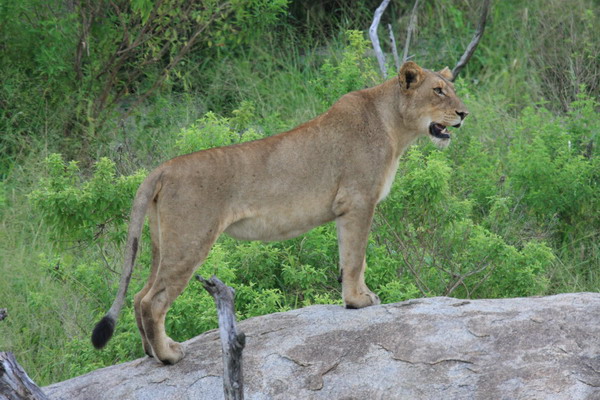
Standing tall.
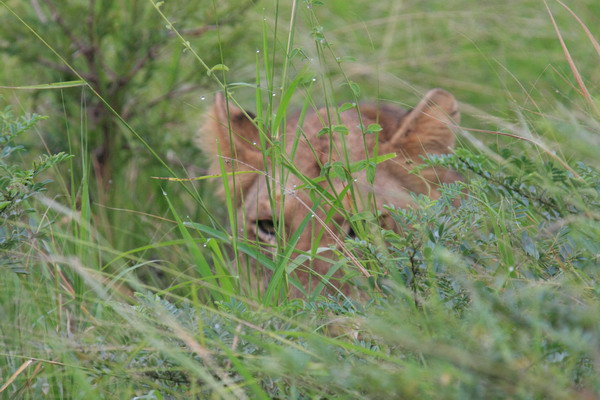
This is NOT the perspective you want to see a lion approaching you from.
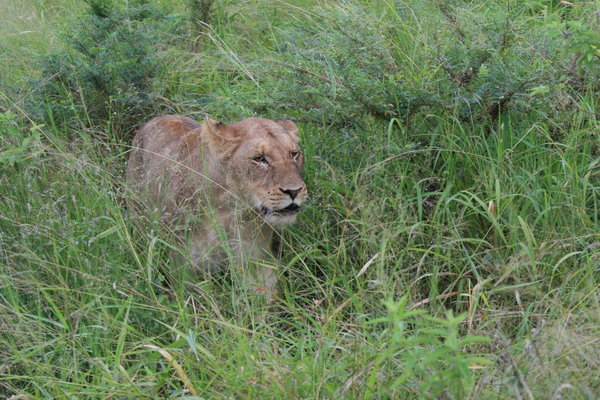
On the prowl.
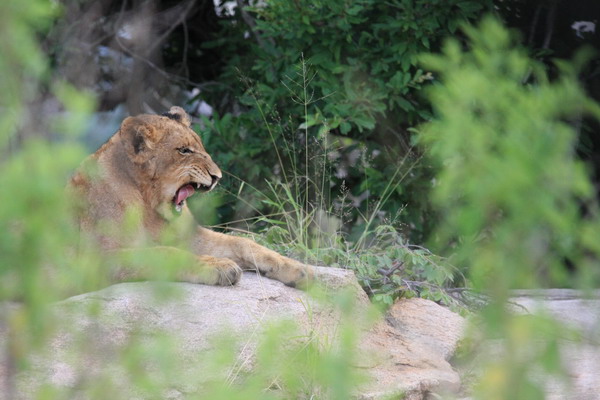
Man, it’s tough being a lion.
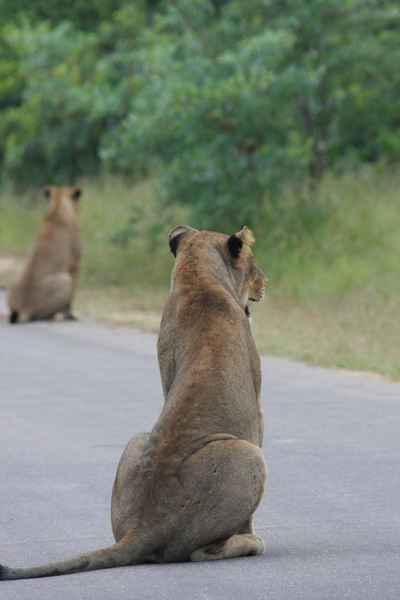
Such powerful creatures.
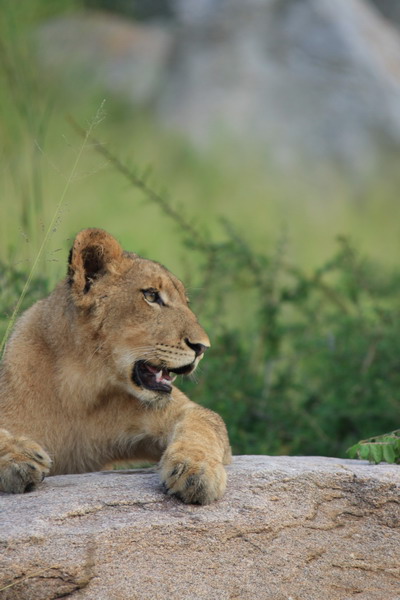
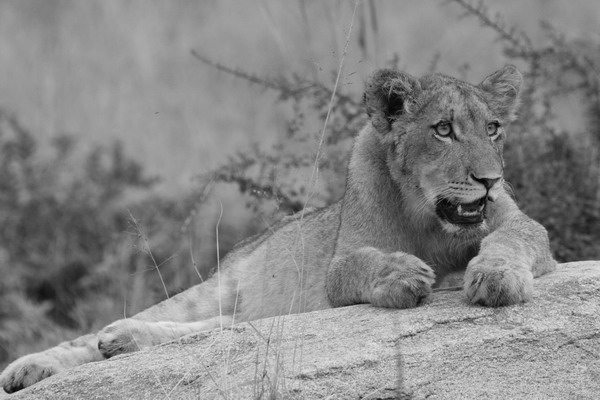
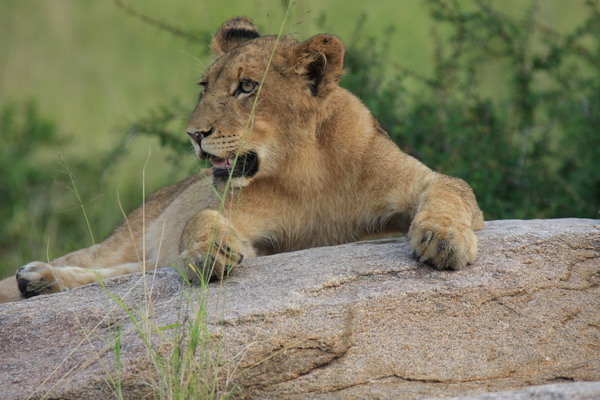
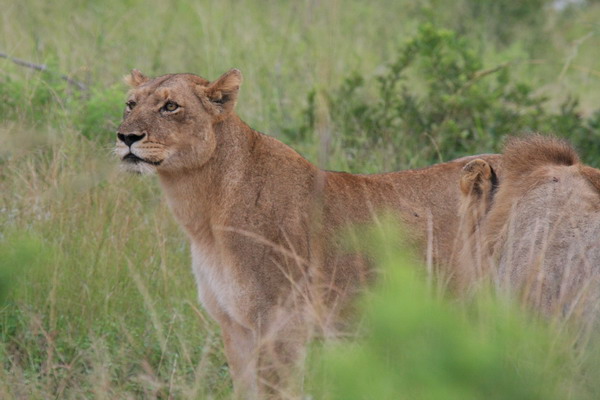
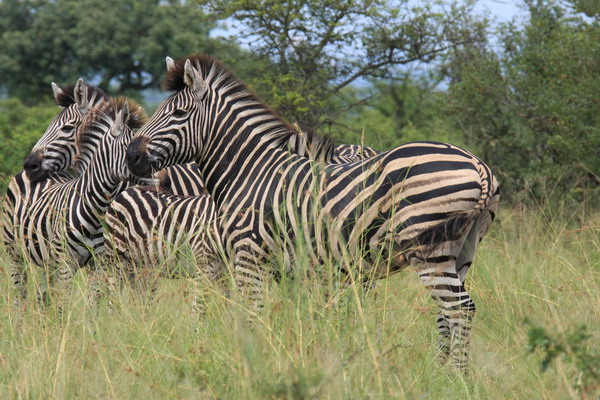
These guys look like food. Yum.
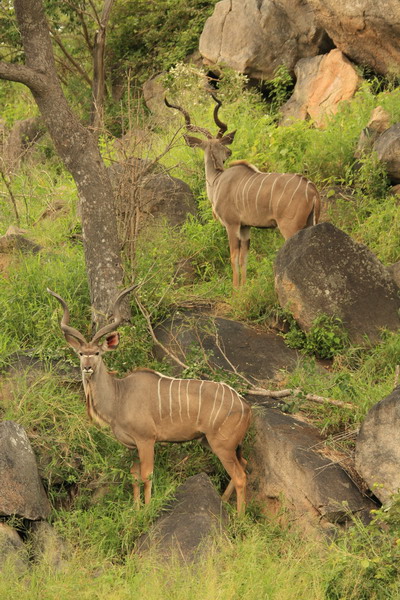
More kudu on the rock.
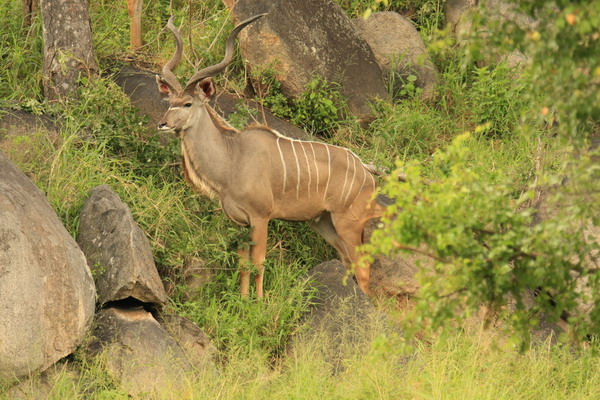
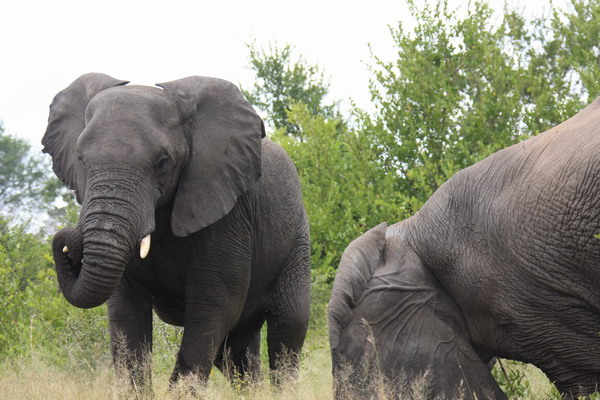
We always loved watching the elephants.
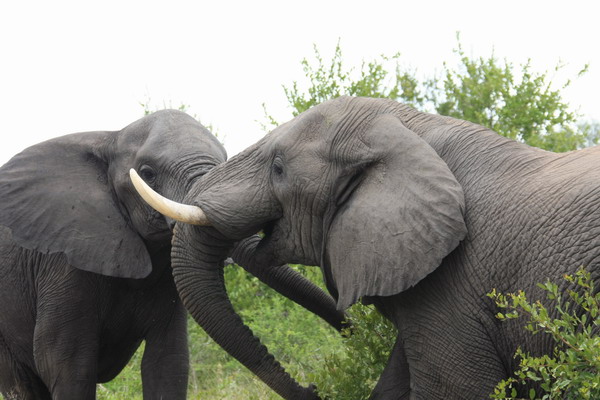
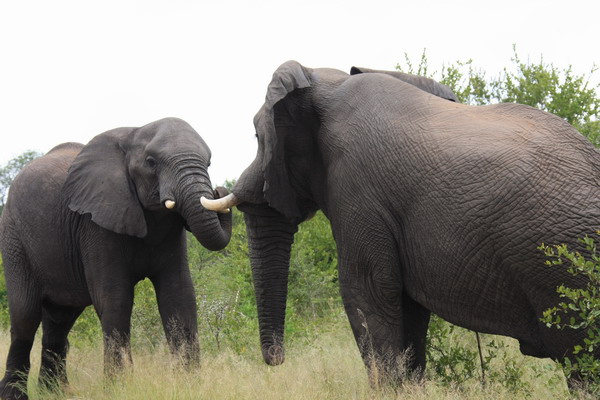
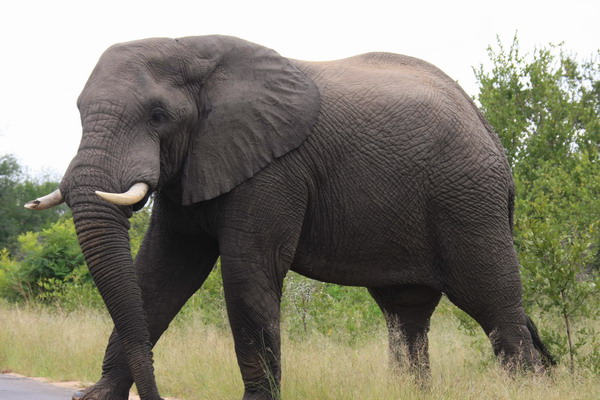
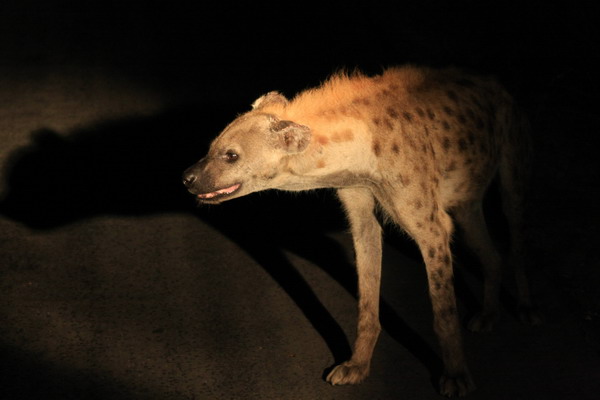
Back on another night game drive, we came across one of the most universally reviled animals … the spotted hyena. Our guide told us that someone had been killed by a group of them that week.
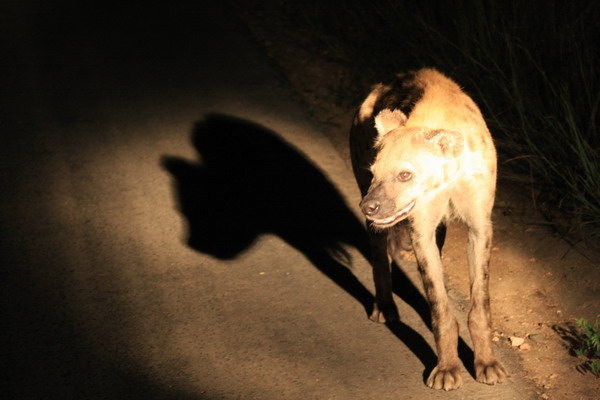
The night made them seem that much more sinister. I know it’s being anthropomorphic, but that is what it appeared.
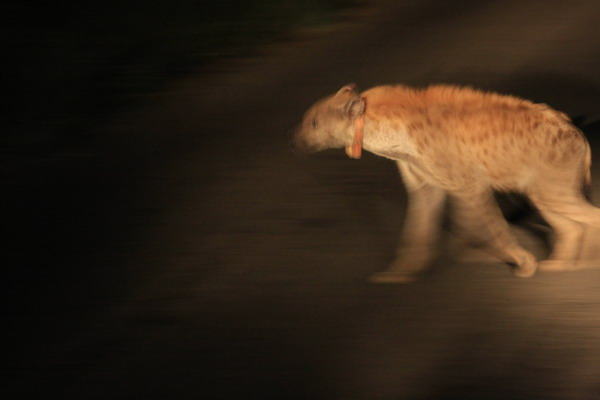
Their gait is so ungainly.
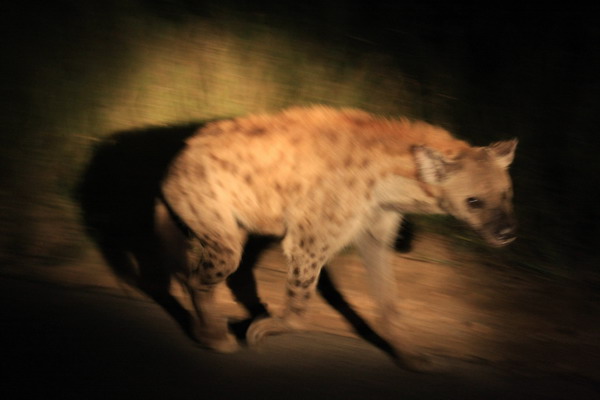
Unlike the lions, these animals definitely knew we were there.
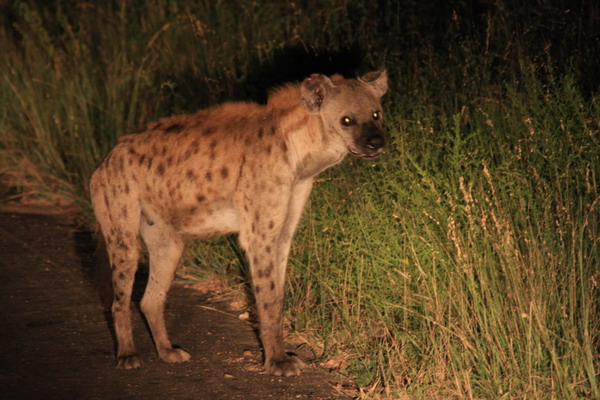
Well, that is the end of our safari. It was a great experience. Many moments of excitement mixed with long stretches where we could just talk, drive slow and enjoy being together. All in all, it was wonderful and I highly recommend the experience.
Up next will be one final post on South Africa … more images from Cape Town.
So, until then…
–Jim
Month: May 2009
South Africa — Safari (Part 3)
It was another early morning, and we had a spectacular sunrise to watch.
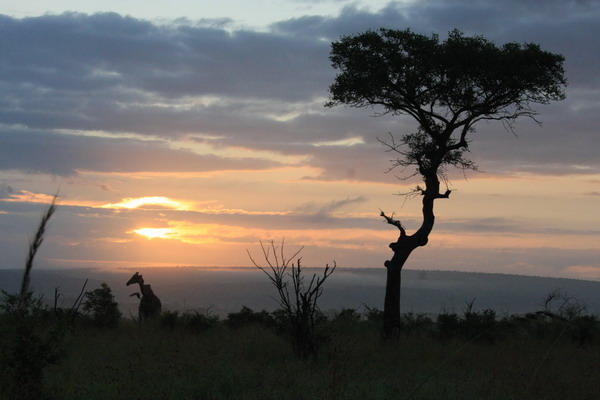

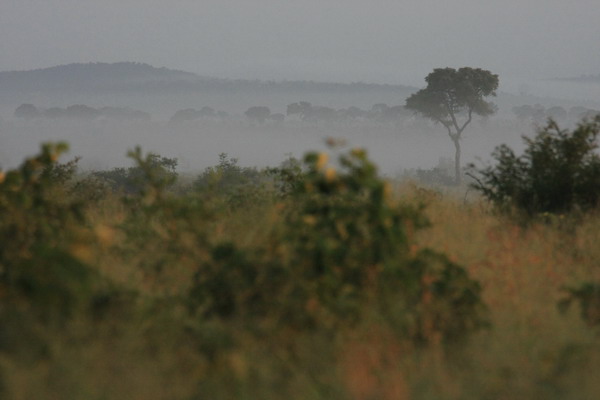
I loved the varying layers of mist as the sun came up and warmed up the savannah.
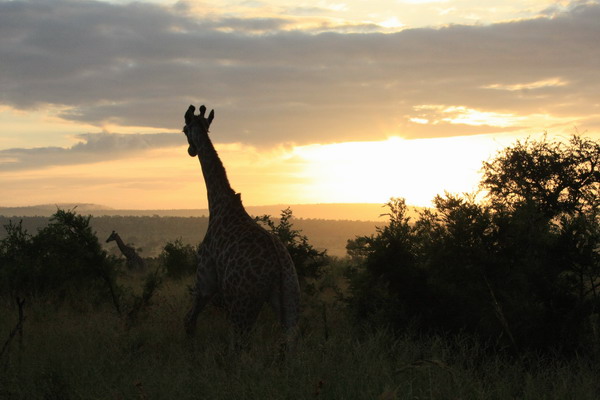
Somehow, I don’t think the giraffe were impressed by the sunrise.
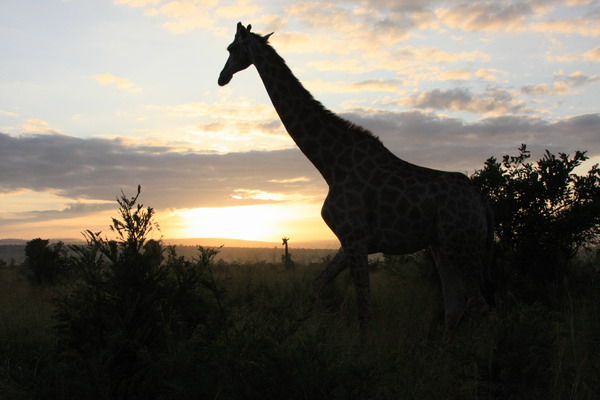
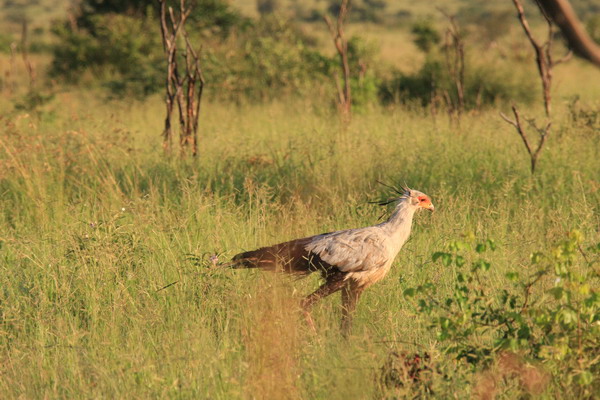
This unique looking creature is the Secretary Bird. It has an eagle-like body on crane-like legs. In South Africa, the Secretary Bird, while not the official bird, is featured as a symbol on the national coat of arms, representing vigilance and military might, as well as the rise and pride of modern South Africa.
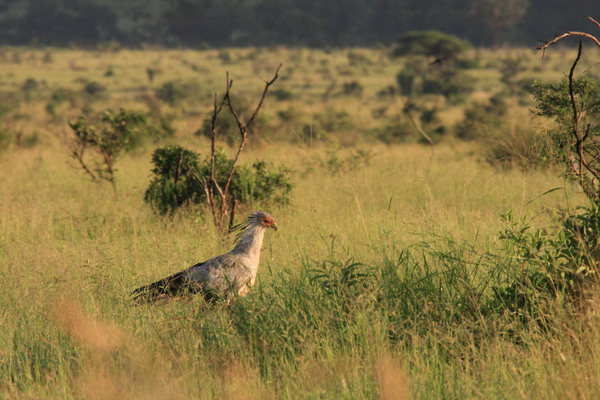
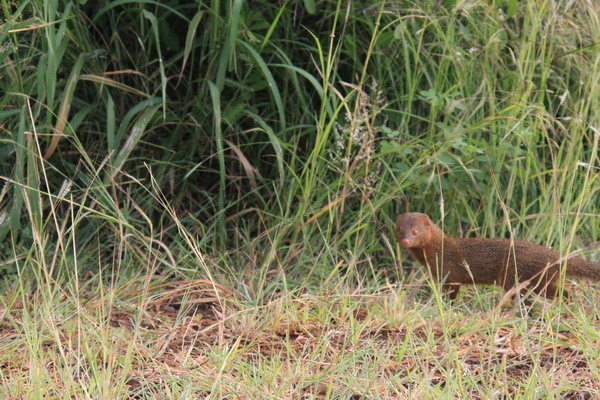
The slender mongoose.
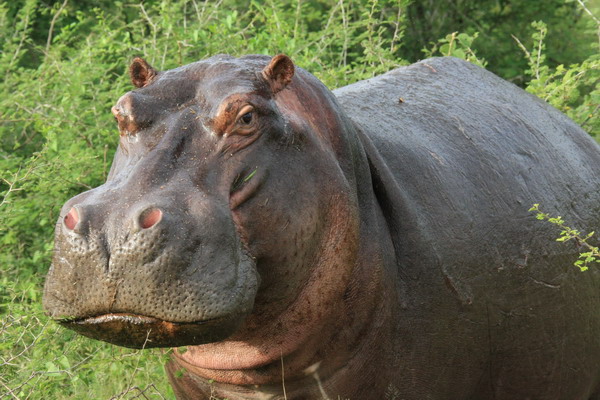
Although I have no idea what it’s sex is, this hippo looks like a female to me. She was startled to see us so close. We were too. Interestingly, the hippo’s closest living relatives are cetaceans (whales, porpoise, etc.). They are also the third largest terrestrial animal after the elephant and white rhino.
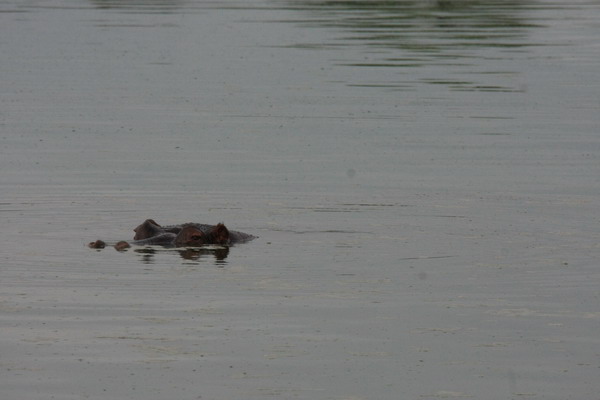
Since they spend most of their time in the water, this is normally all that you can see of the hippo.
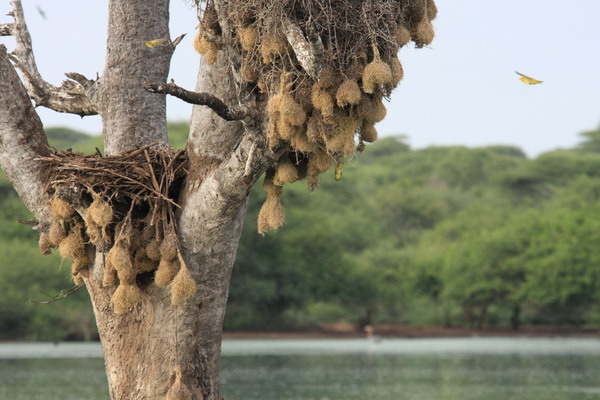
Here’s a (bird) house with a view.
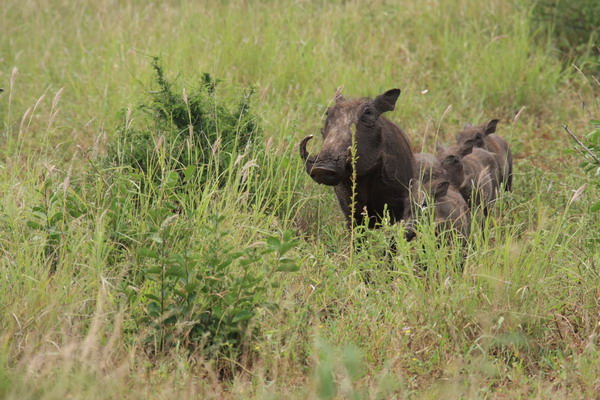
Pumbaa!!!
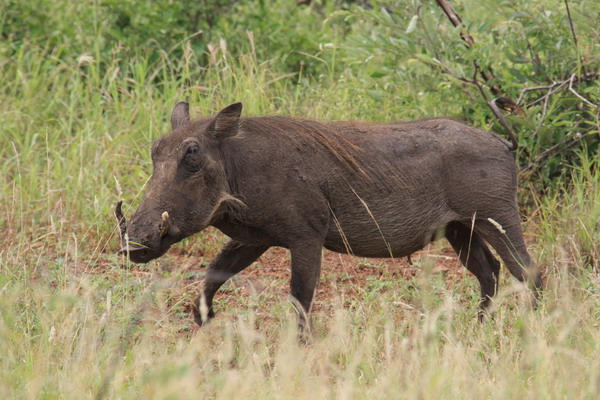
Ok, not the most handsome creatures.


Speaking of not the most handsome, this is the Southern Ground-hornbill.
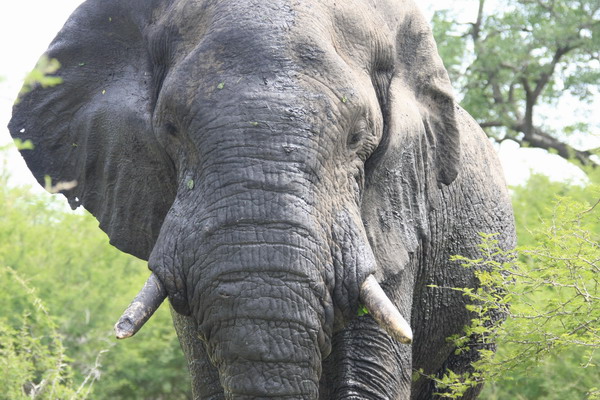
I don’t know if it was something in the air, but this elephant didn’t like us nearby as well.
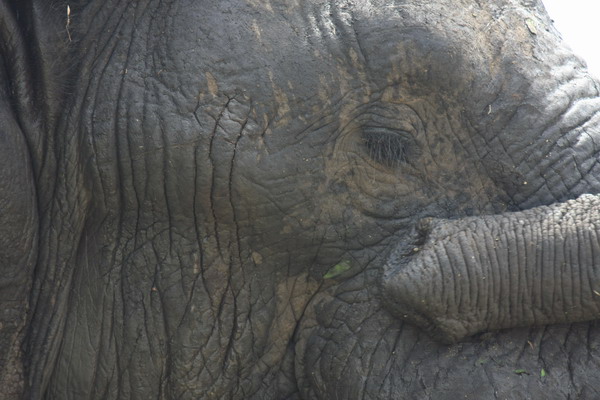
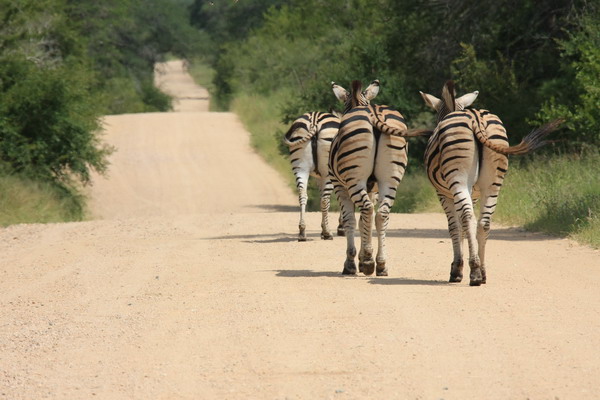
What can I say? Zebras walking down the road.
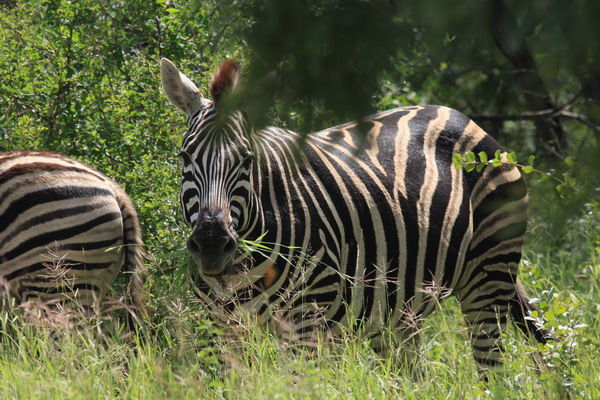
Hey, who’s over there??
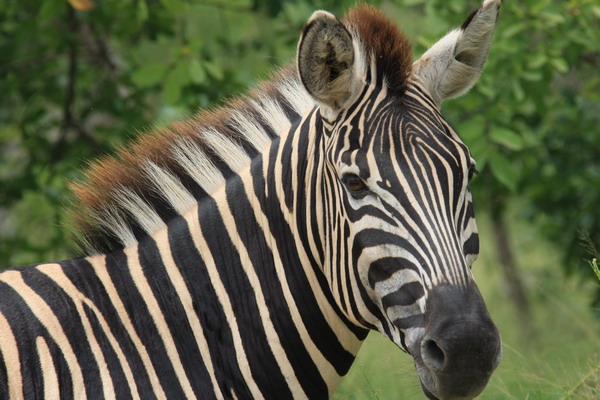
This zebra was kind enough to strike a pose for me.
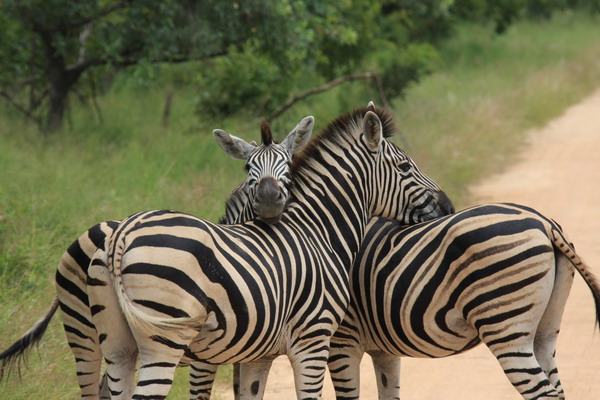
They were very cuddly.
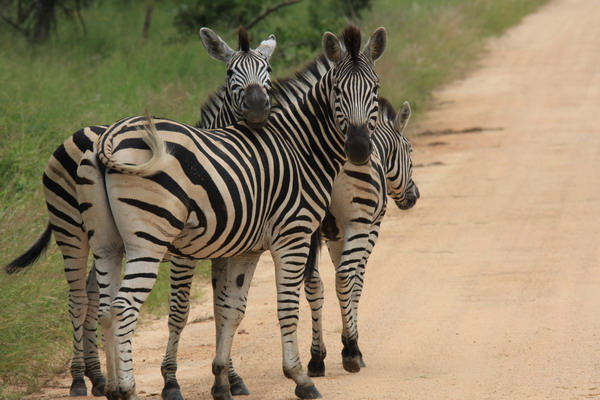

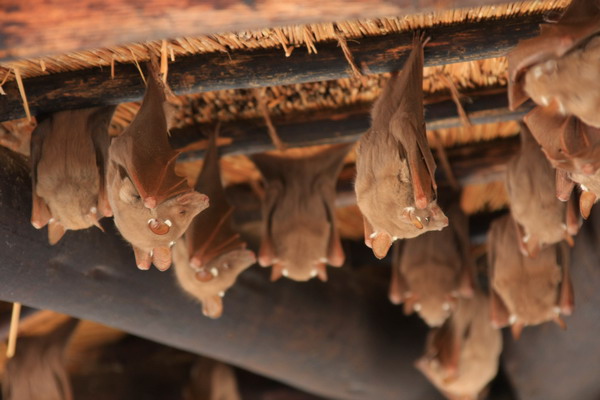
These are Peters’ Epauletted Fruit Bats. They were hanging out over our head while we had lunch. Although that may not seem sanitary, we didn’t have any problem.
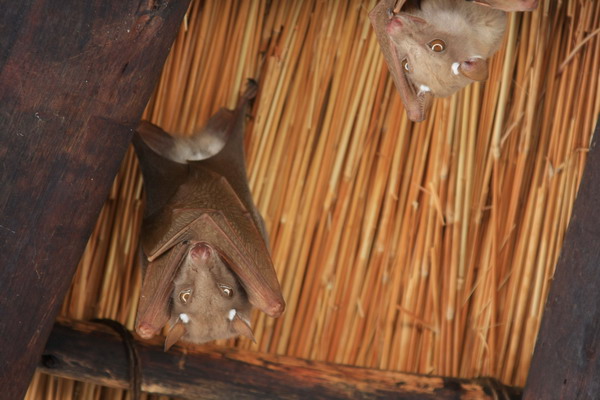
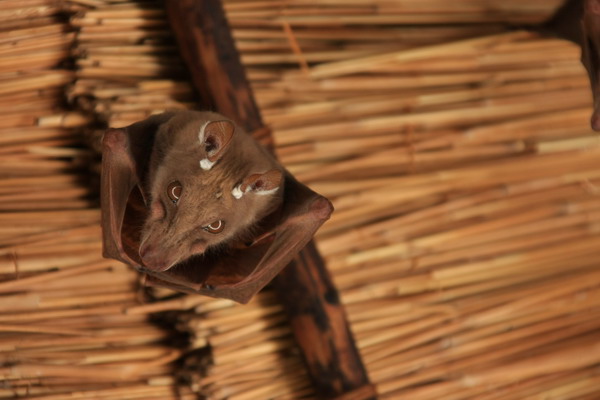
I think this is the scariest/meanest looking animal we saw.
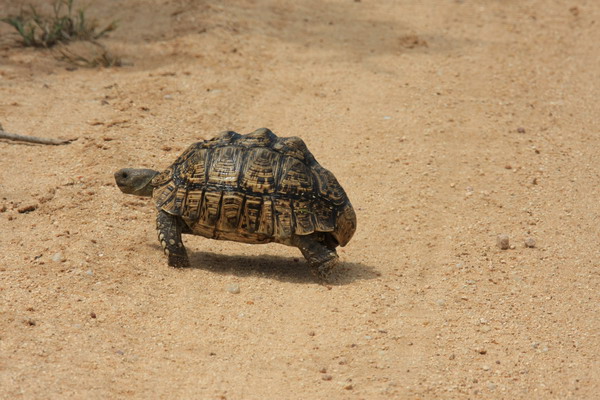
A Leopard Tortoise sauntering away from us. Although this one was rather small, they can weigh up to 40kg and 75cm long.

More baboons cleaning each other, at or below the speed limit of course.
That wraps up part three of the safari. Only one to go. The star of that one is the lion. Truly kings of their domain.
So, until then…
–Jim
South Africa — Safari (Part 2)
OK, time to move out into the savannah area of the park. Although these pictures would seem to indicate otherwise, there were long periods that we didn’t see any big animals. Of course, there were other times that every turn had a new surprise. This was one of those times…
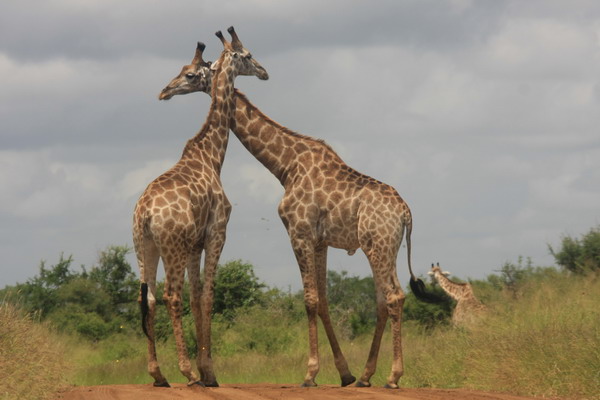
These two adolescent males were fascinating.
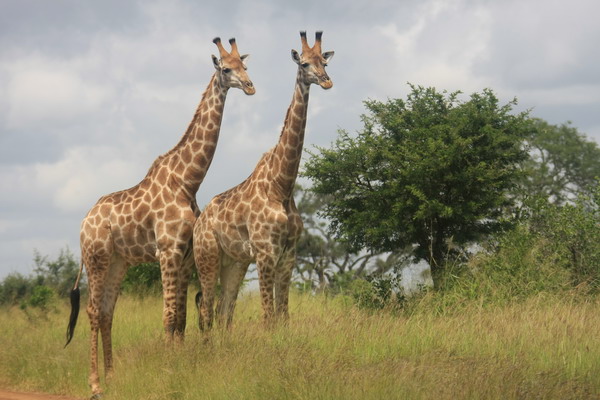
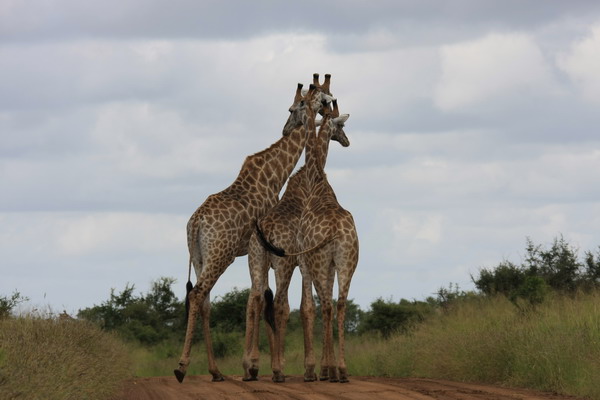
This is Daddy and the two boys.
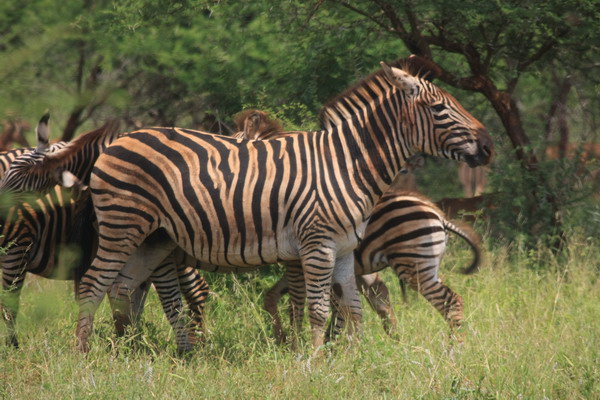
The small and stout zebra.
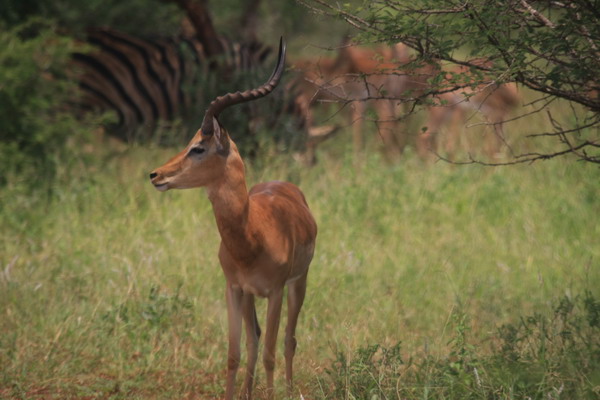
Another impala. He was with a group of males and zebra.
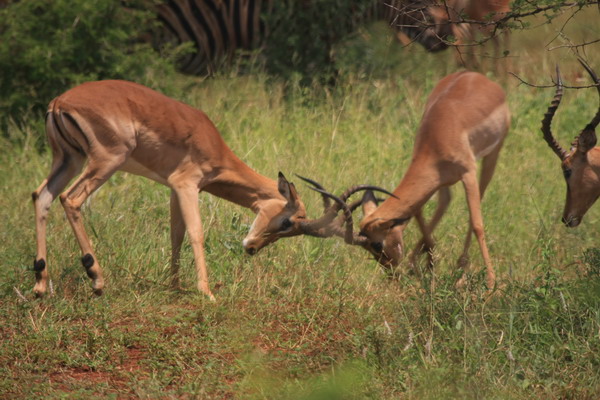
These two were sparring. They practice for the day to take over the role of lone male for the harem.
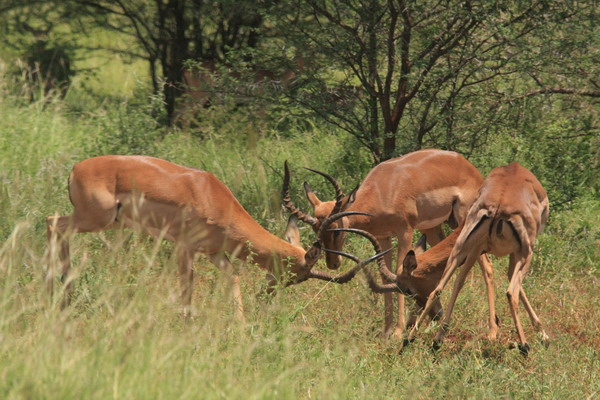
Now a third impala joined the fray.
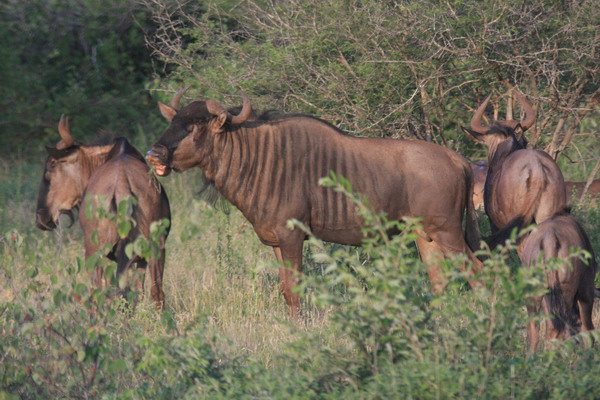
The blue wildebeest. Although there weren’t as many as the 1 million in the Serengeti herd, there were quite a few.
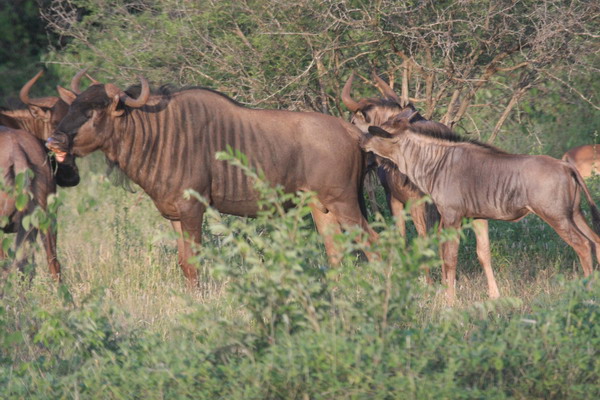
What’s that smell??
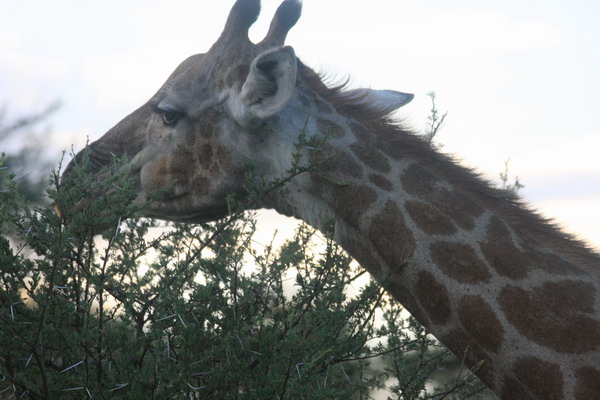
Mmm, tasty.
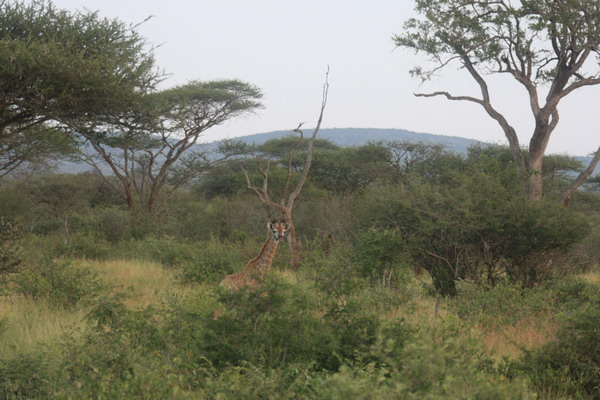
Just a baby.
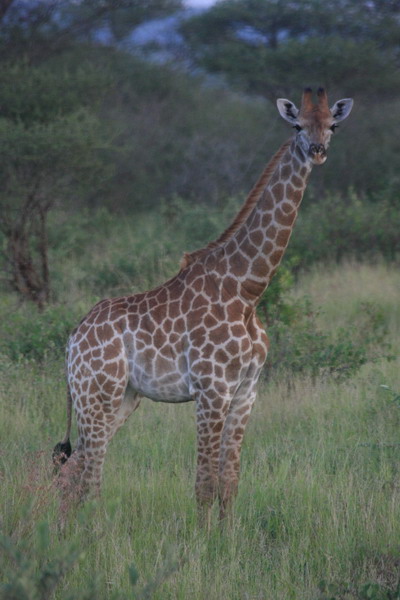
But still so tall.
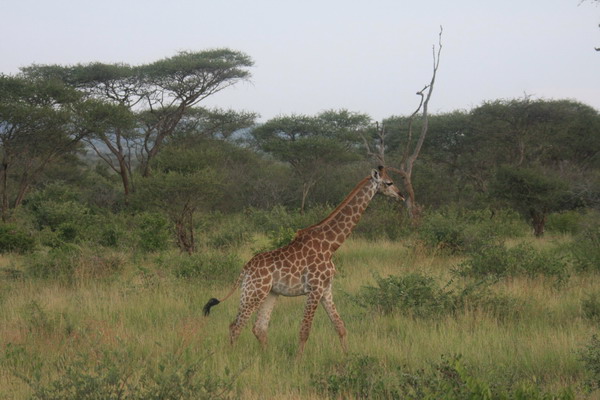
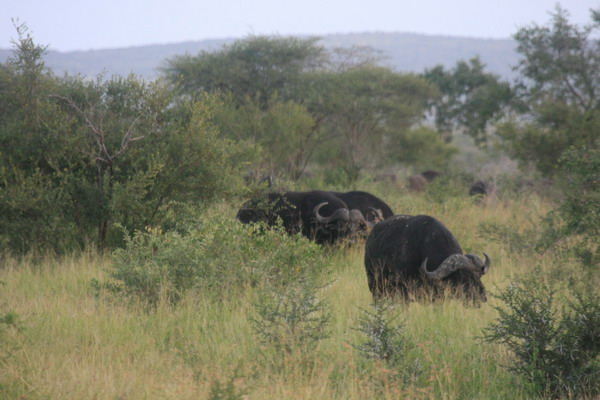
The cape buffalo. Although apparently very docile, they are very dangerous. Reportedly, these animals kill 200 people every year.

Although, we had our own car, we didn’t always drive. When we ventured out after nightfall, we went with a guide and safari vehicle. It was a LOT easier to take pictures from that vehicle and have someone else worry about driving and spotting the animals.
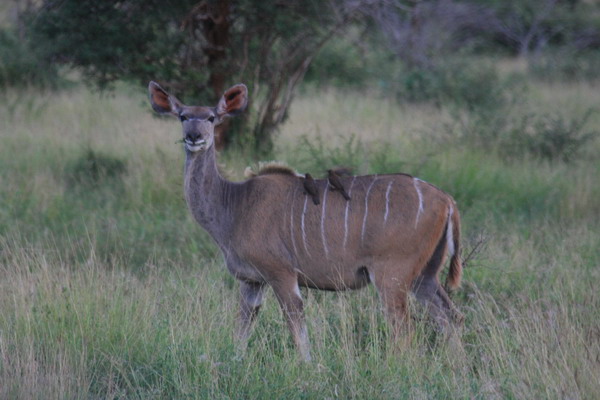
Another female kudu.
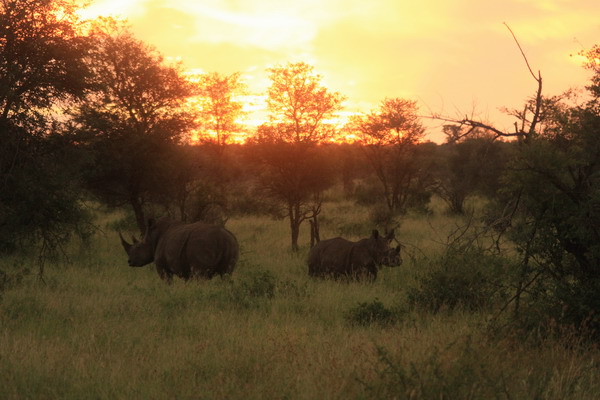
We were also fortunate to see both species of rhino: black and white. These are white rhinos. They are so named not for their color. Rather, they refer to the shape of their lip. The white rhino has a flat upper lip and feeds on grasses, while the black rhino has a pointed lip to feed on trees and bushes.

They were fun to watch with the fiery sky as a backdrop.
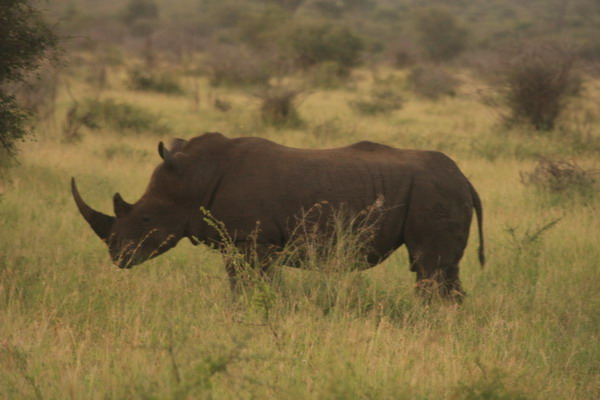
Rhinos are also part of the famous “Big 5,” along with lions, leopards, elephants, and cape buffalo.
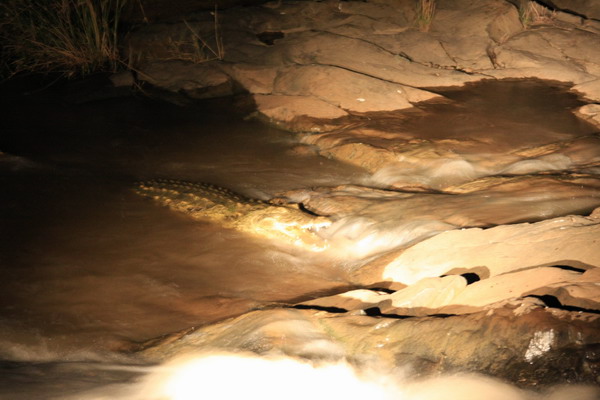
The crocs were out in force that night. I liked his fishing technique. Open up and see what swims in.
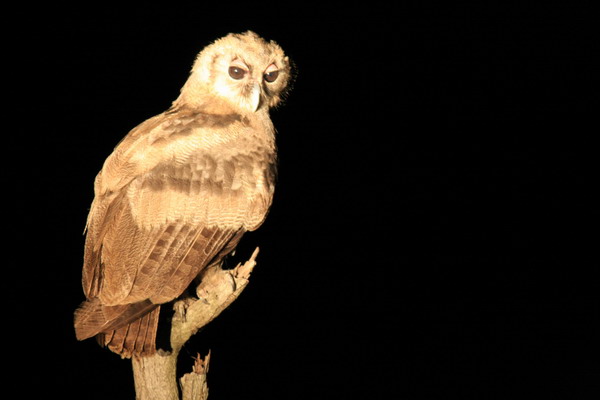
Verreaux’s (Giant) Eagle Owl.
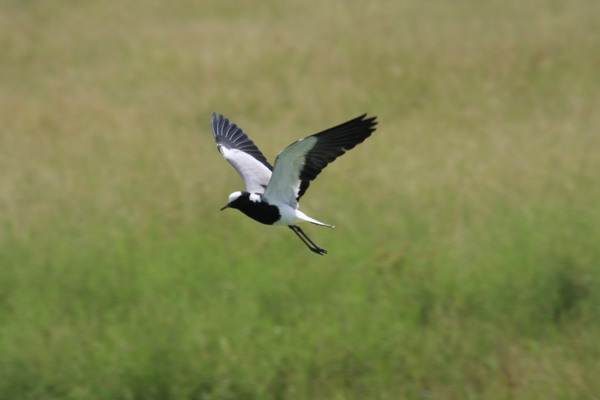
The Blacksmith Lapwing or Blacksmith Plover.
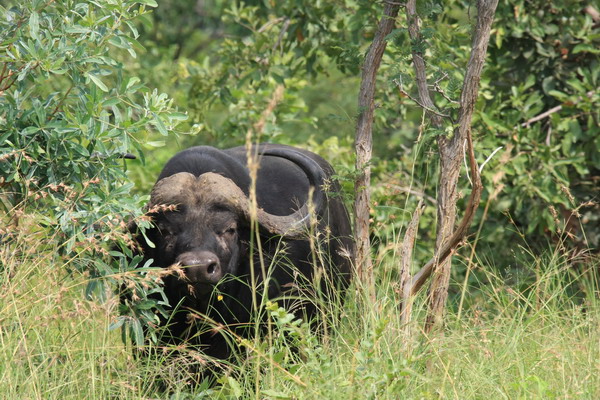
Another buffalo eating his way toward us.
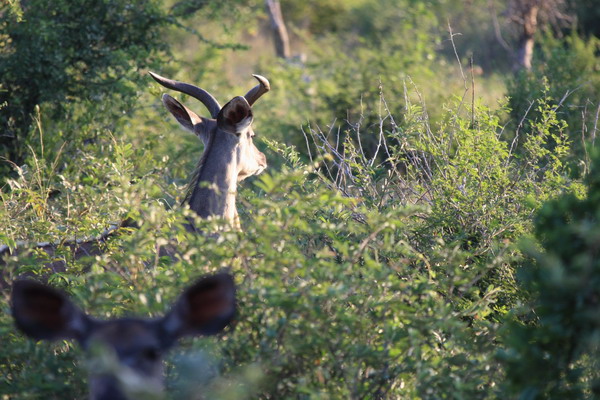
For comparison, this is a 5-year old kudu.
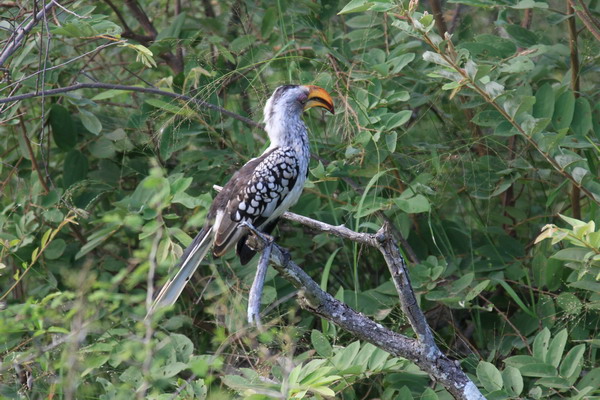
This is the Southern Yellow-billed Hornbill. If you’re interested, females lay 3 to 4 white eggs in their nest cavities and incubate them for about 25 days.
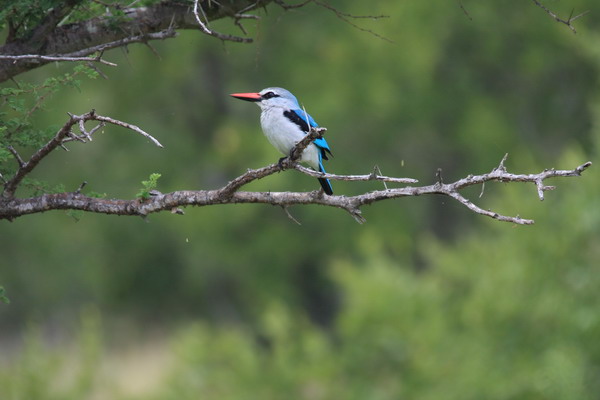
The Woodland Kingfisher. Although it is a “kingfisher,” it prefers drier habitats in more traditional woodland and this one was far from water.
That completes part 2. Next up will be hippos, warthogs, elephants, more zebra and bats.
Until then…
–Jim
South Africa — Safari (part 1)
We left Cape Town and flew to the northeast corner of South Africa to visit Kruger National park. We decided taking a vehicle and driving ourselves was the way to go. So, we rented a car from the airport and drove a couple hours to the park. Once inside, it was quite a sight. First of all, this park is not like any other park. It’s huge and teeming with wildlife. Although we could go hours without seeing major wildlife, there was life all around us. For me, the contrast with the Serengeti in Tanzania was stark. Both were great experiences, and I recommend either for a safari experience.
In Kruger, we spent the first few nights at a lodge in the middle of the park and the last two at an opulent lodge, just outside one of the gates (no camping on this trip).
Ok, enough commentary, here are the images from the safari.
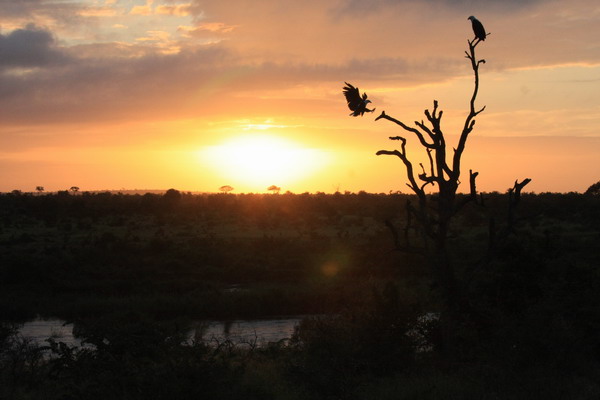
This is an African eagle that was landing right after sunrise and one of my favorite images from the trip.
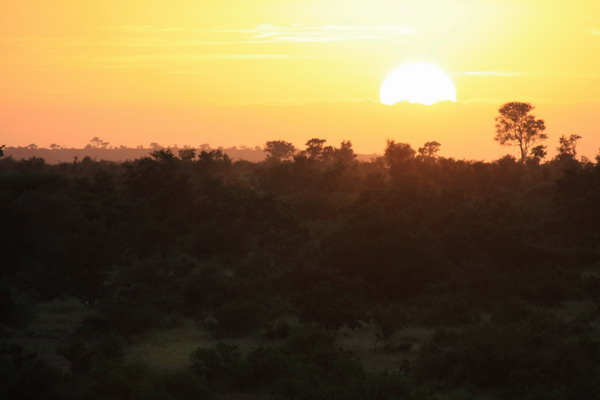
We got up early every morning, since that is often the best time to see the animals. So, although 5:30AM seemed a little early, it made for majestic sunrises.
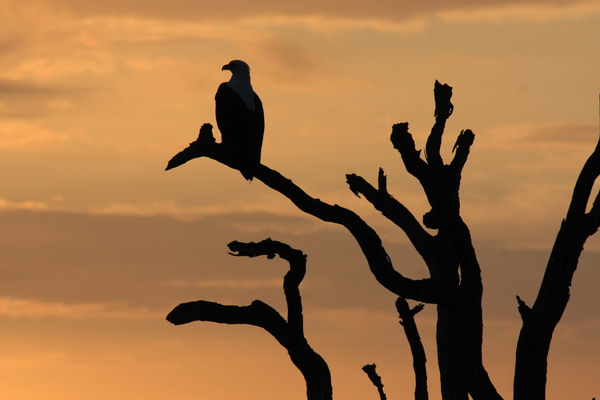
This eagle was kind enough to pose for us.
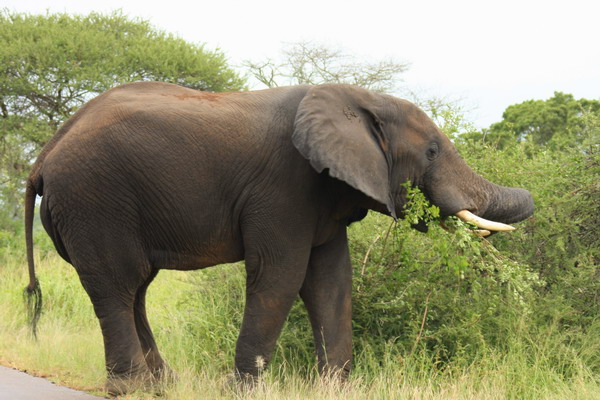
This bull elephant greeted us on our arrival to the park. He wasn’t too happy we tried to drive by him, so he turned and made a motion to charge us. Unfortunately, this is one situation we could have used a guide. We didn’t know if it was better to acquiesce and back up, or hold our ground. In the end, we yielded to the massive animal coming our way and he eventually left the road and allowed us to pass. It was an exciting start!

Another bull elephant that wouldn’t allow us to pass. We ended up waiting for about 45 minutes. During which time, he was apparently waiting for a female, as you can see from the picture. Count his legs… 4 legs, a trunk, and yes, that is what you think it is.
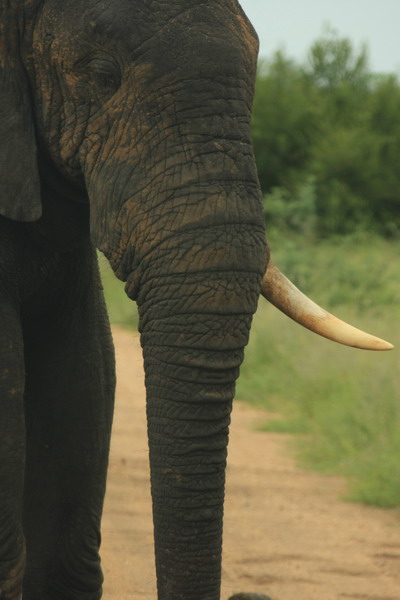
Here he is again, with his one tusk. These elephants were huge … especially up close. They were over 10 feet high (>3m) and weigh in at between 11,000 and 13,000 pounds (5-6,000kg).
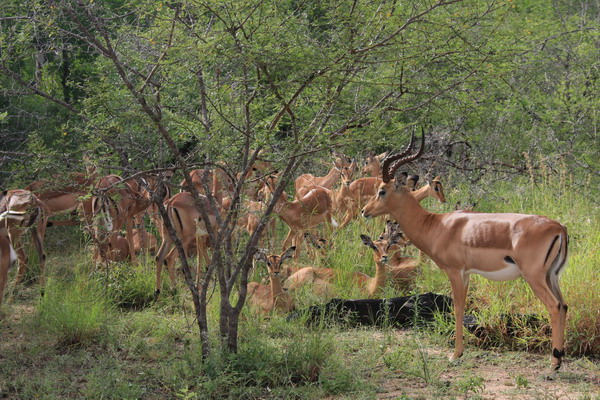
Impala are by far the most numerous animal in the park. They are in two types of group: all males, or one male with a harem of females (as is the case here)
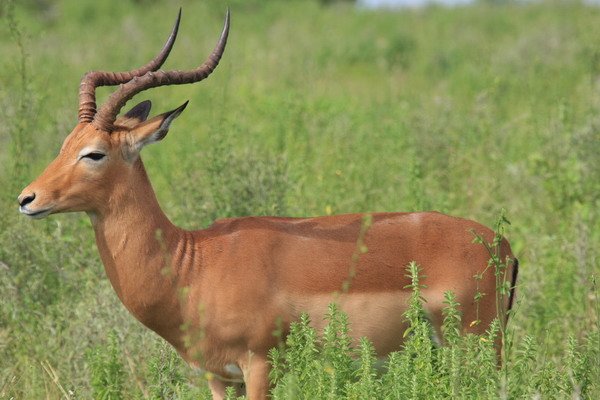
Here’s another male impala in the late summer grass.
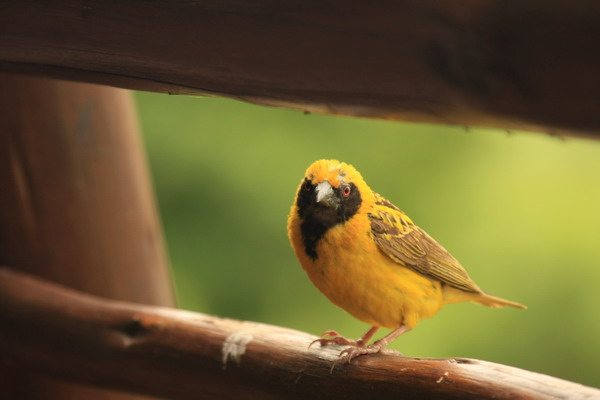
This brightly colored bird was a very active (and efficient) scavenger at our hotel. They sat outside, waiting for someone to leave their plate unattended for a moment, and would flit in to grab a morsel.
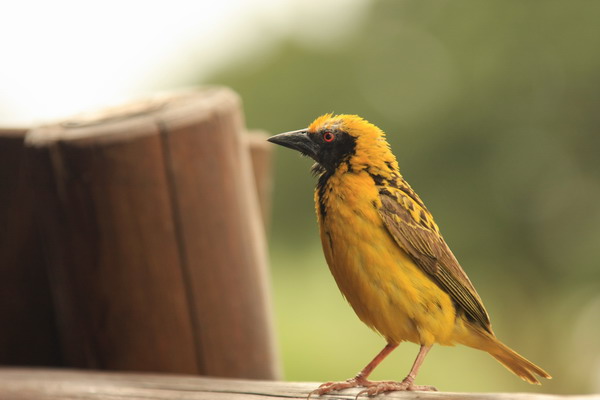
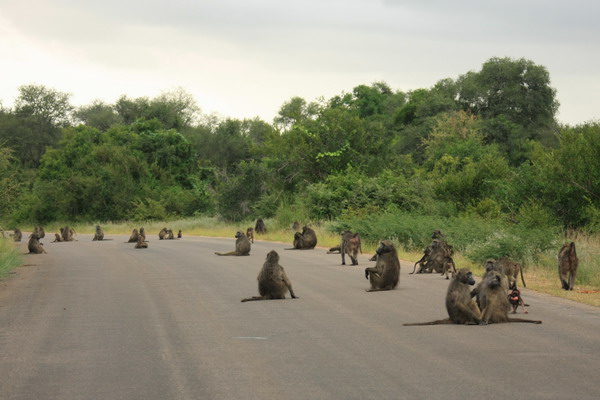
This is the sight that greeted us as we rounded a corner… a troupe of baboons.


They are not the nicest creatures so we didn’t mind seeing them in the rearview mirror.
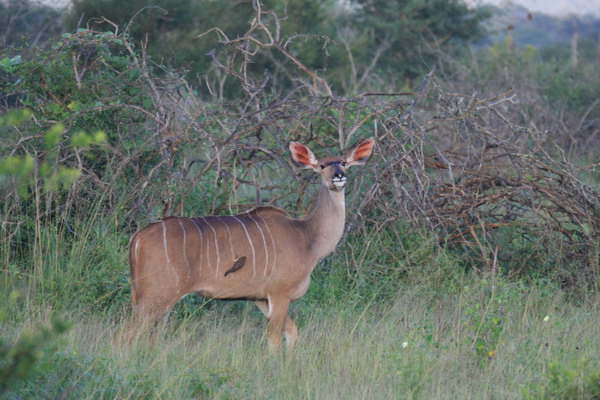
This is a female Kudu. She’s an antelope, and while not quite as impressive as the male kudu you’ll see later, still very regal.
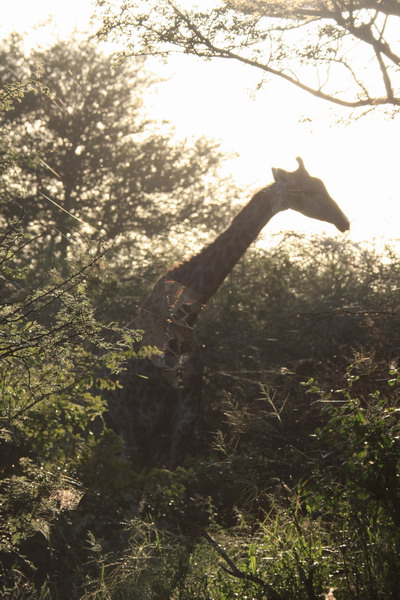
This giraffe was grabbing an early morning bite to eat.
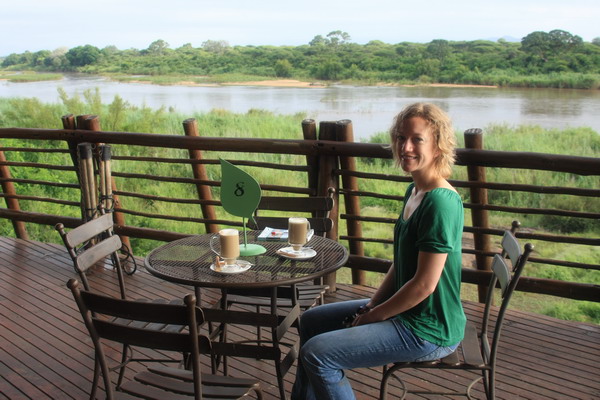
After that, we were inspired to do the same. So, we finished our early morning game drive and came back to our camp to have a latte with a view.
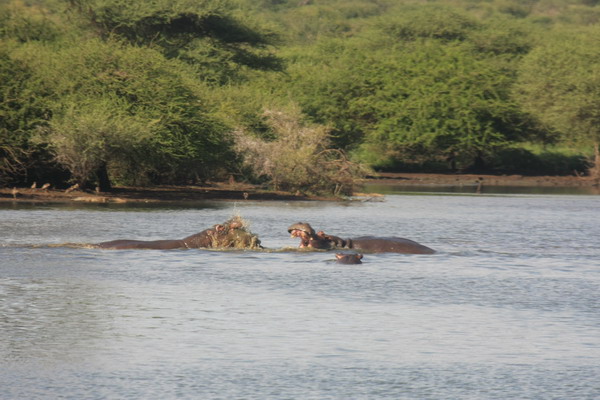
These hippos provided great viewing pleasure.
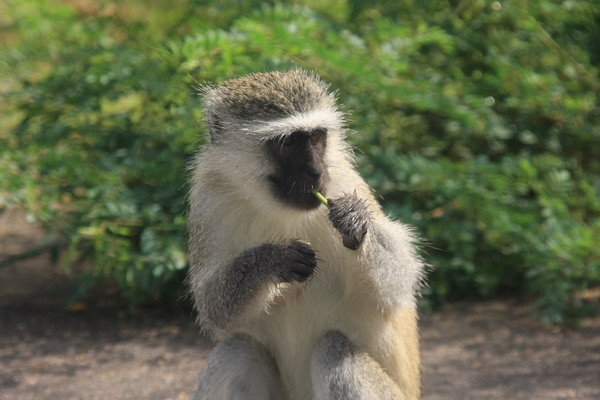
This is a vervet monkey. However, we also heard them referred to as blue monkeys. You’ll see why in a couple pictures.
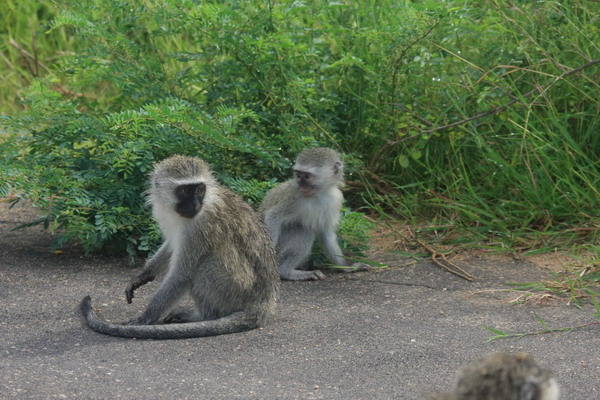
Much cuter than the baboons.
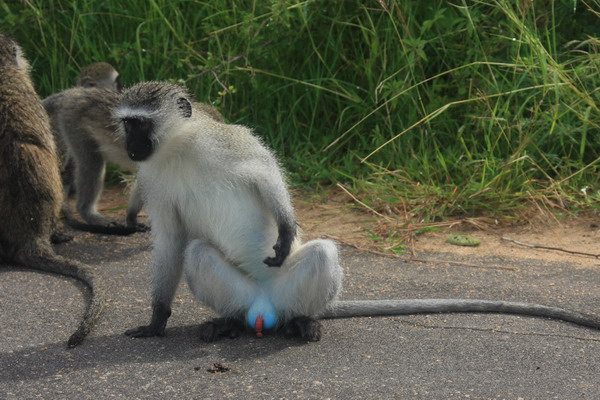
Can you see why now?
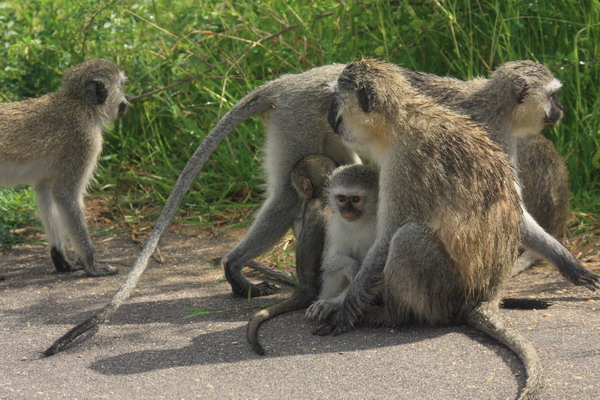
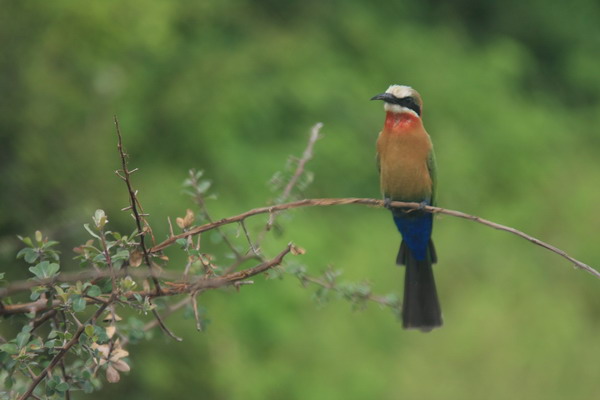
This is a blue-cheeked bee-eater.
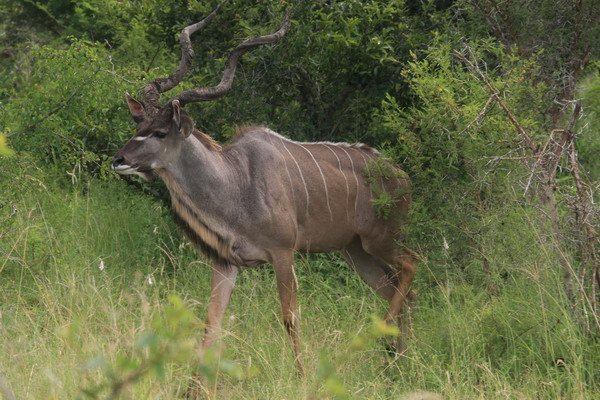
Here is the king of the antelope, a Kudu. You can tell how old they are by the number of spirals in the horn. Each turn is approximately 5 years.
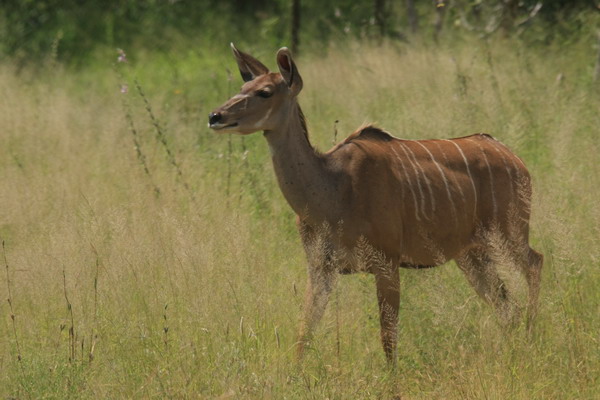
Another female kudu.
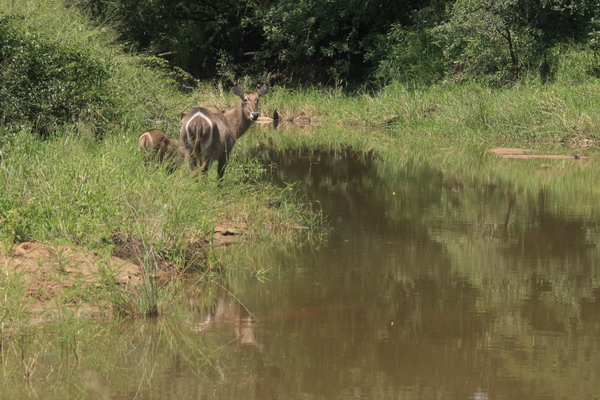
This is a female waterbuck and her youngster. They are also in the antelope family.
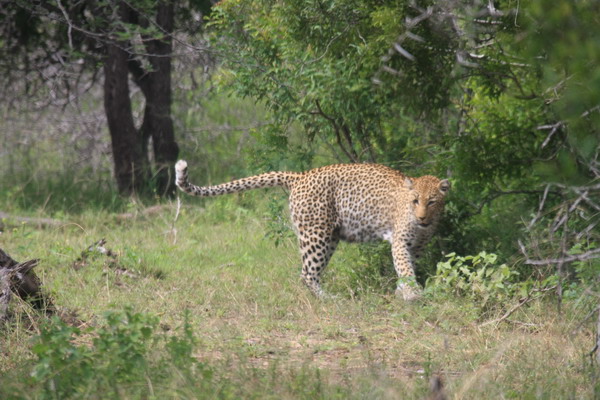
This is my favorite animal we saw on the trip. The ever elusive leopard. We were fortunate enough to see three.
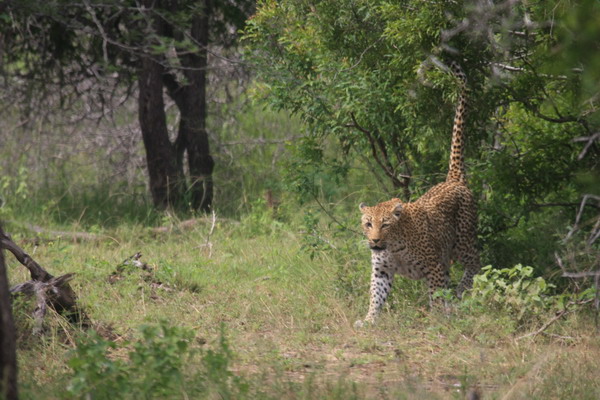
So, that covers part one of the safari. Three more to go. Up next we’ll have giraffe, impala, zebra, and birds…
Until then.
–Jim
South Africa — Penguins
Despite my best intention, this (and the remaining South Africa posts) have taken forever to publish.
Our journey in Cape Town continued to the beach. We wanted to see the only African species of penguin, Spheniscus Demersus. There are 17 species penguins, but the African penguin is what lives in the Cape Town region.
I won’t belabor this post with a lot of text … just pictures.
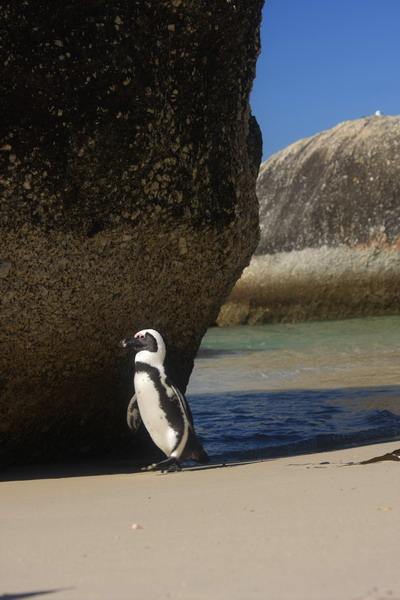
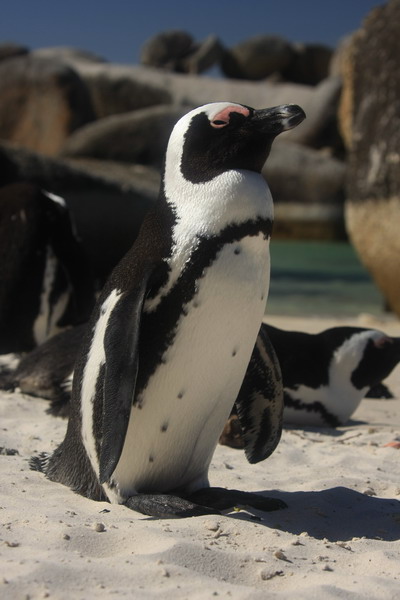
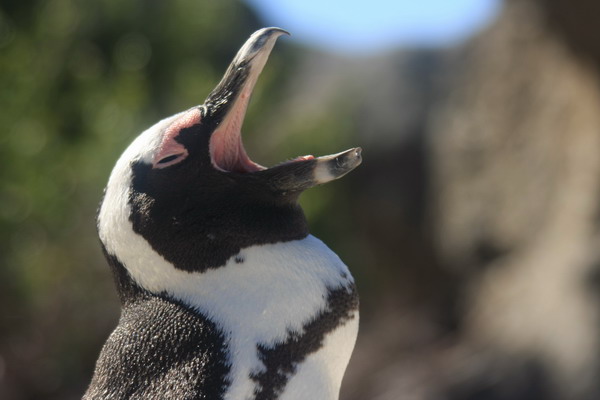
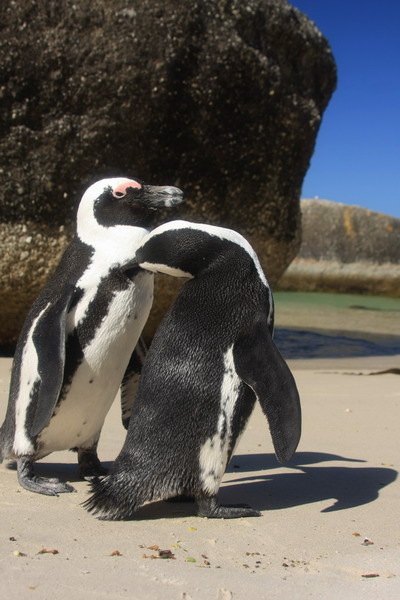
Aren’t they cute? There was lots of penguin love on the beach that day.

As you can see, the penguins let me get up close and personal with them. However, if antagonized, they do bite. I saw a woman nearby who had a huge welt on her hip because she wasn’t nice to one of them.
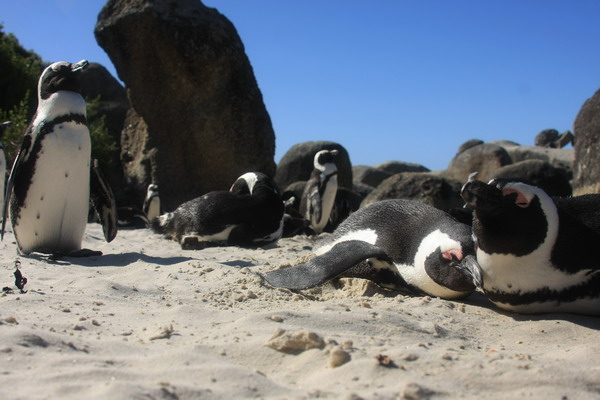
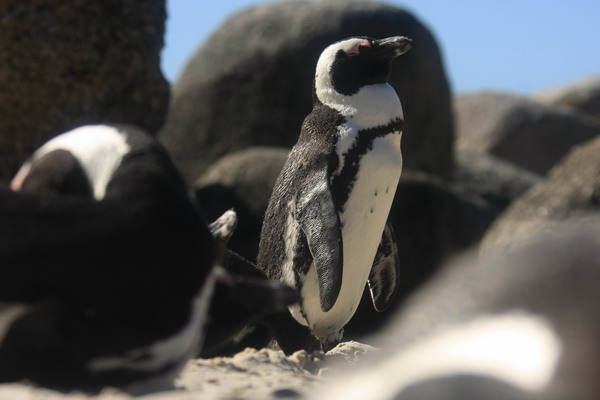
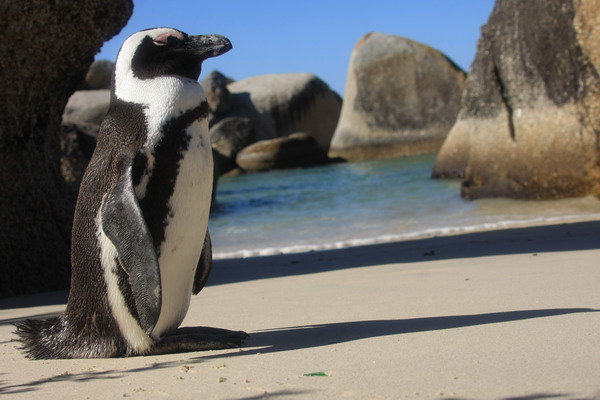
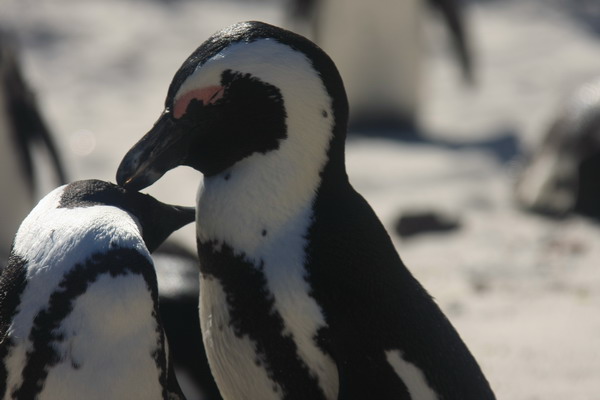
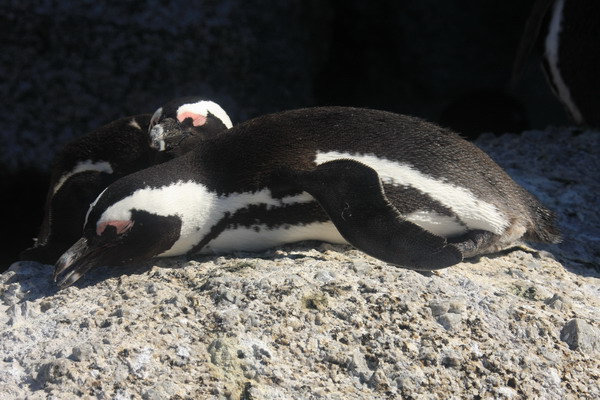
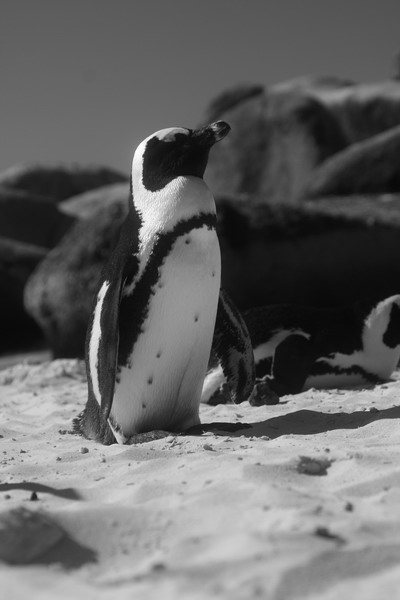
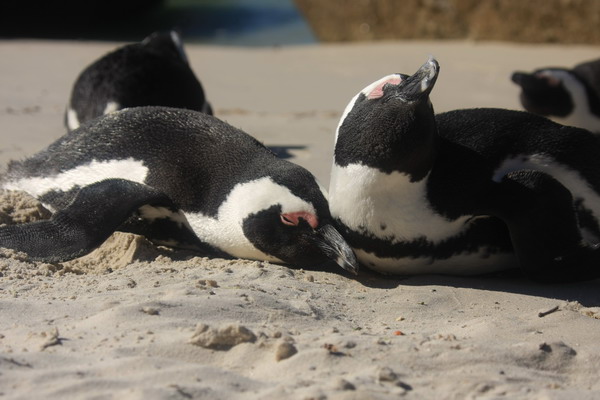
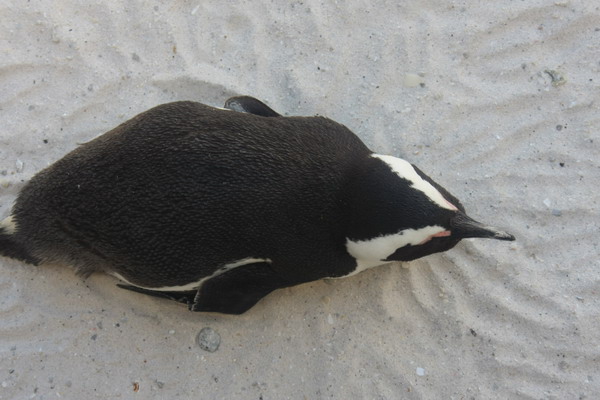
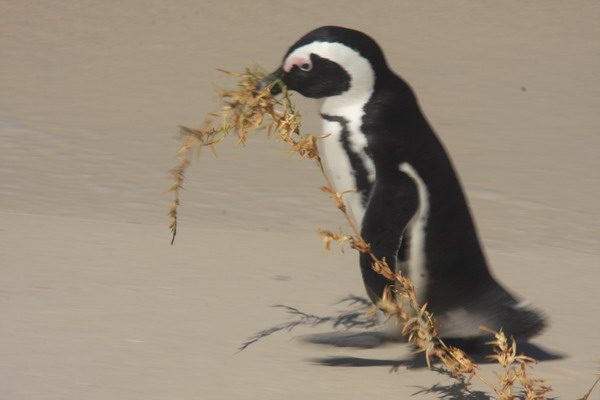
Making a nest…
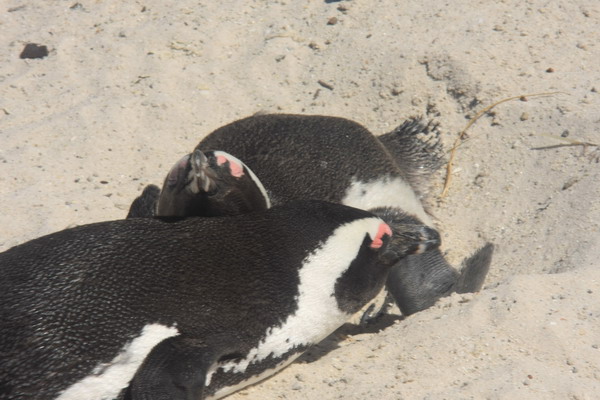
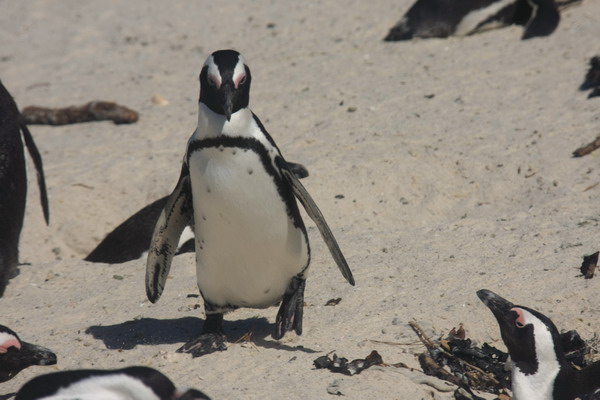
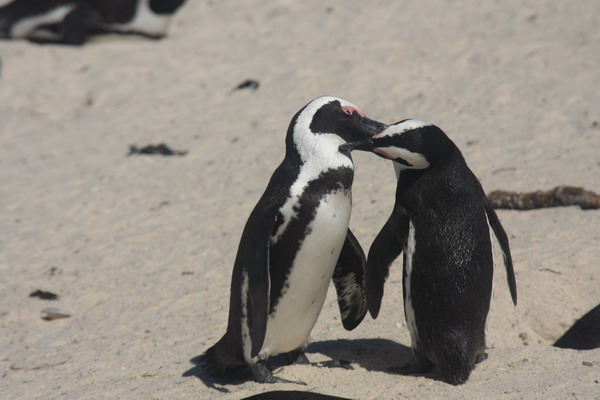
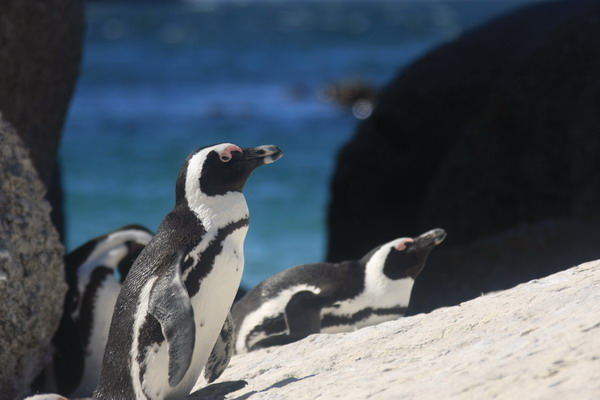
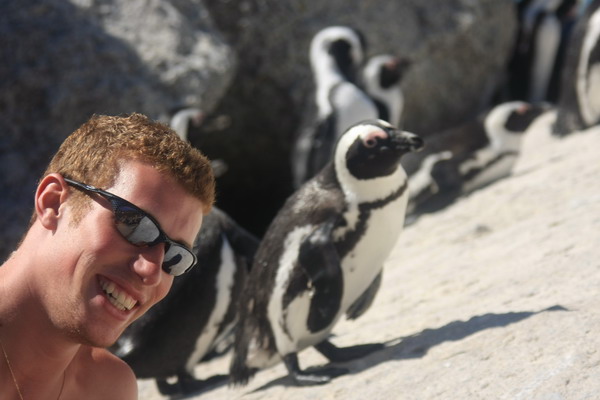
I don’t know who this guy is, but he provided a convenient comparison to see the relative size of the penguins. Plus, I think he looks a little like our friend, Tim.
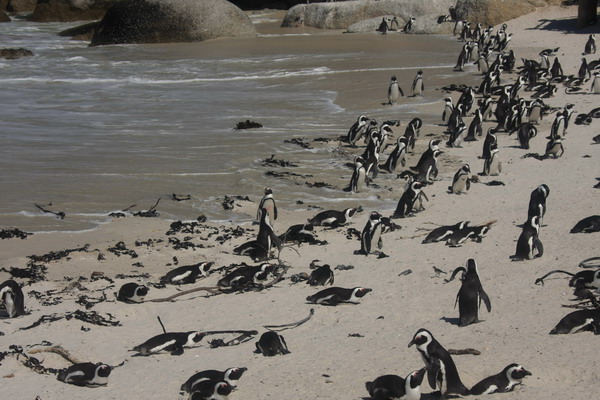
The beach was a series of sandy areas and this one in particular had the highest concentration of penguins.

One of the few families with adolescent penguins.
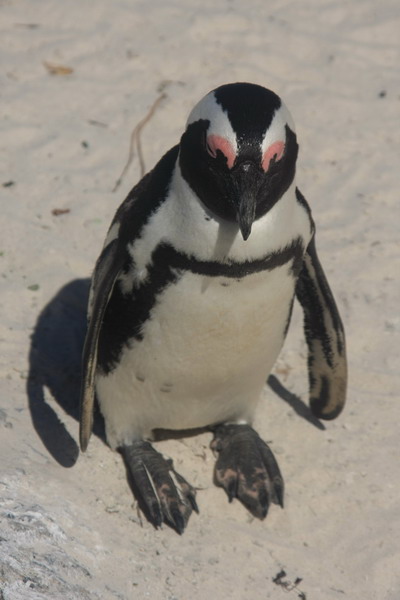
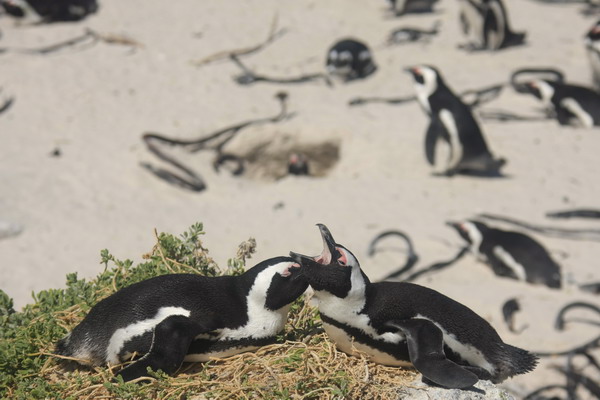
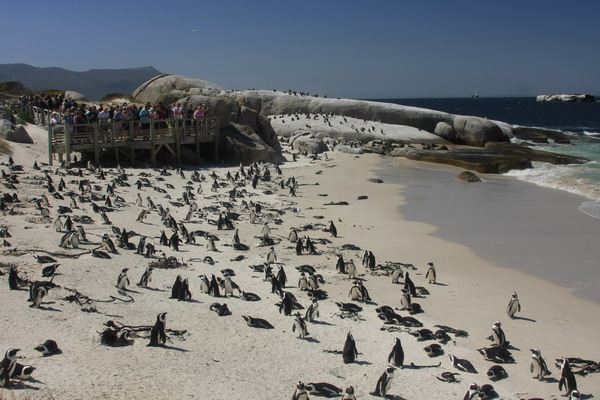
This provides a different perspective of the beach. The boardwalk is where a majority of the tourists stay. It’s the easiest way to see penguins, but keeps you removed from them. I much prefered to be on the beach with them.
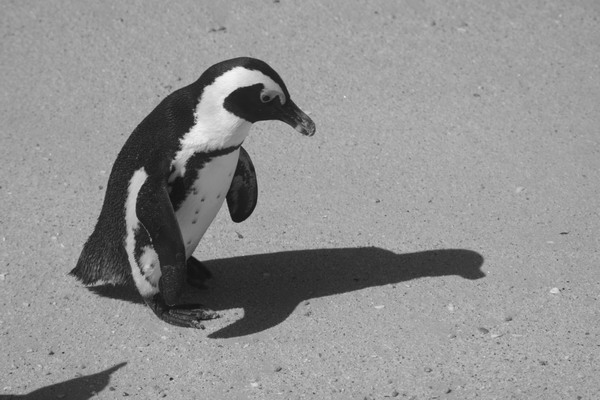
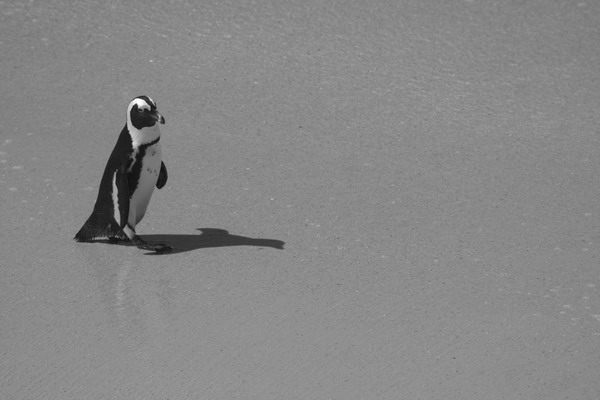
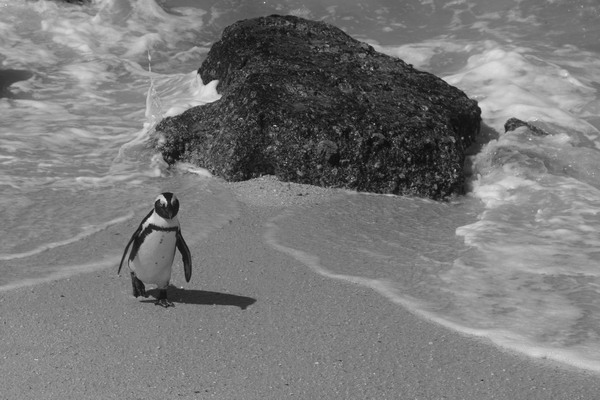
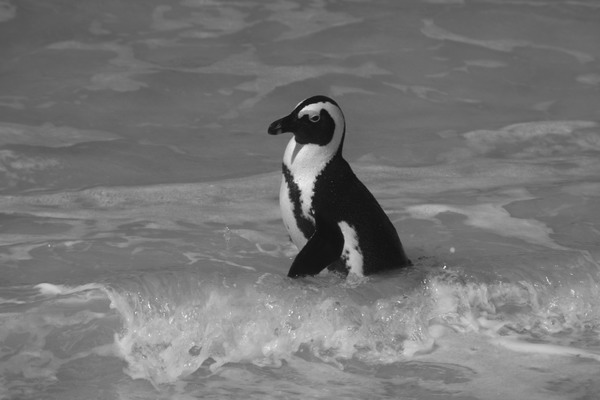
Playing in the surf.

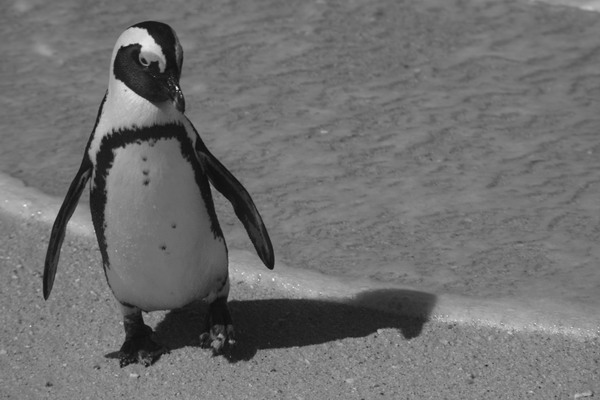
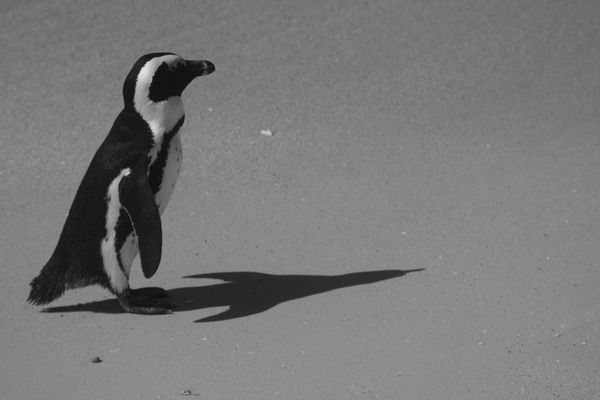
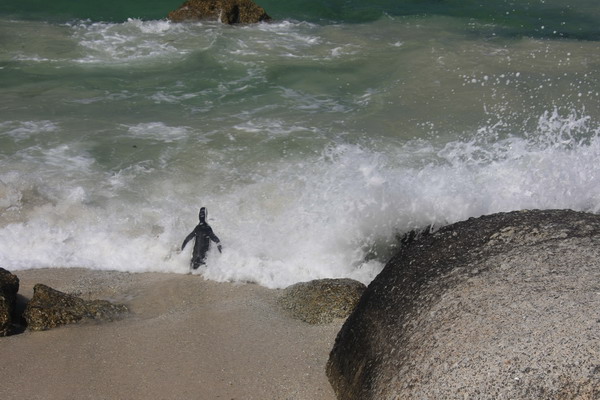
Again, playing in the water.
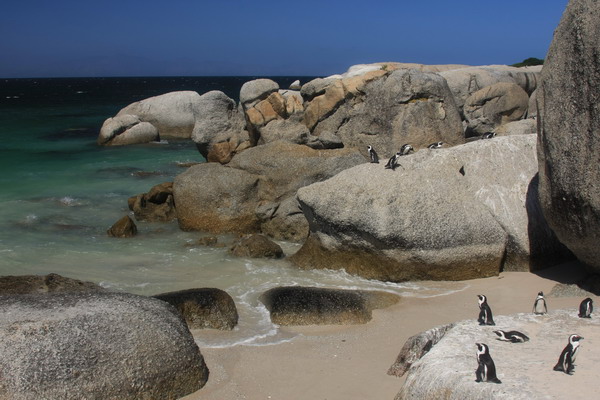
You can see why the beach is called “Boulders Beach.”
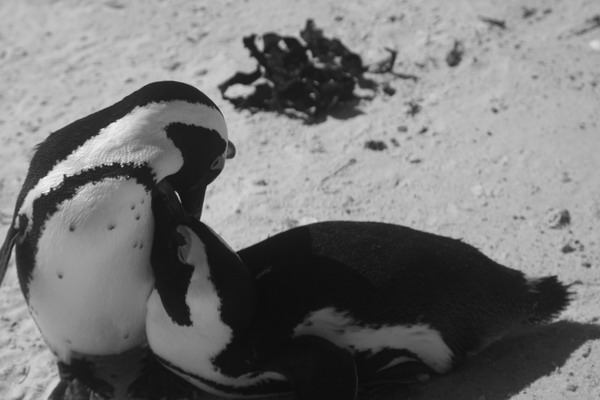
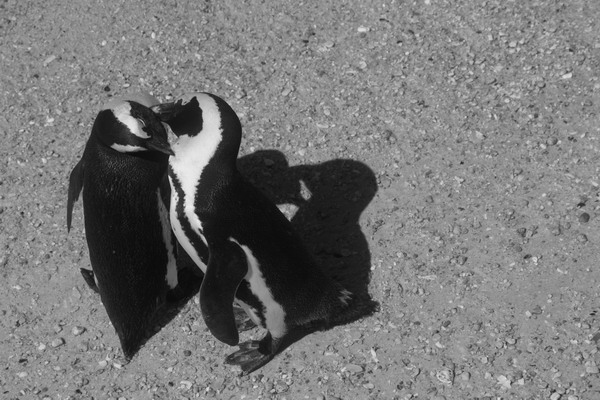
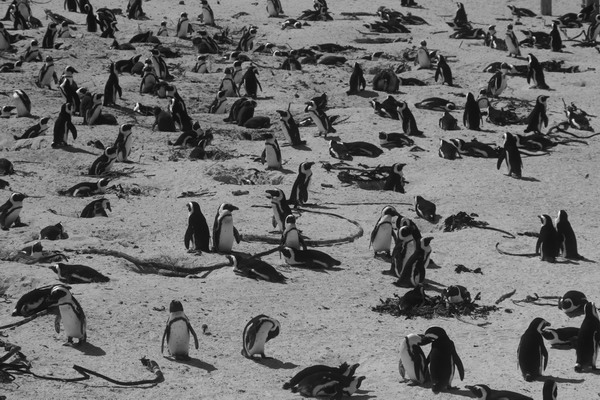
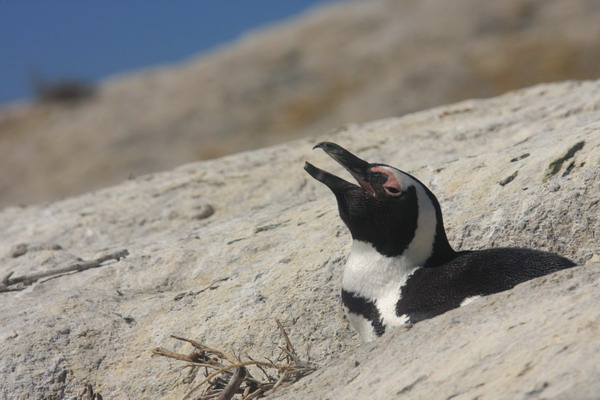
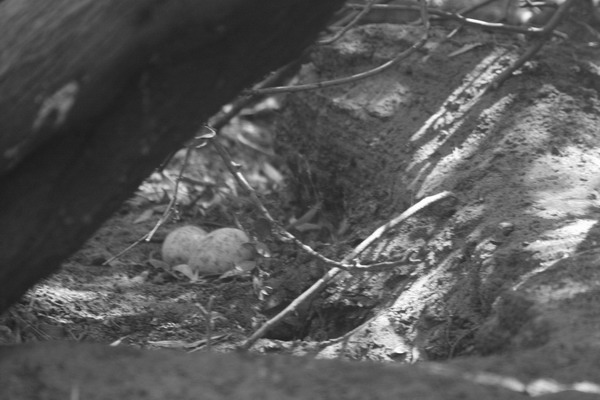
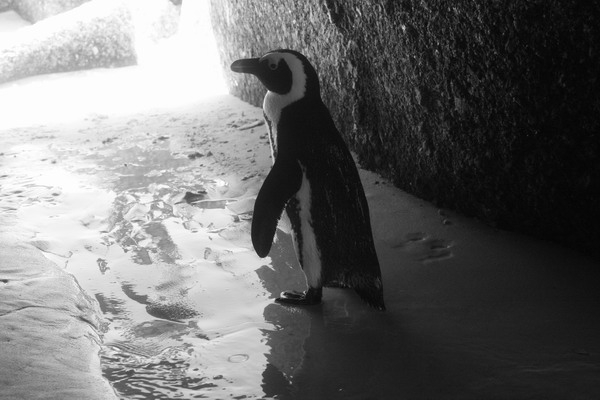
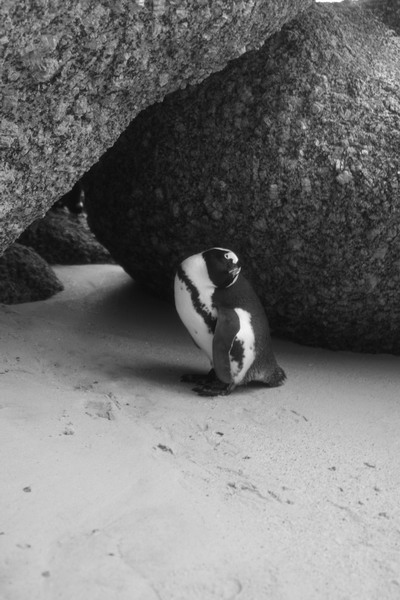
This one was very cute. As I moved the camera to take his picture, he mirrored my movement.
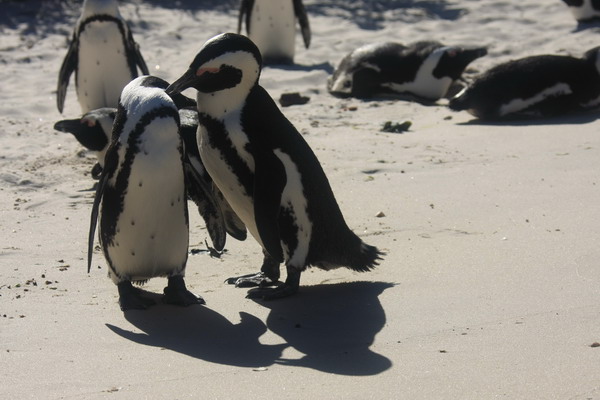
So, that was our day at the beach with the African Penguins.
Next up will be some images of our Safari in Kruger National Park.
Until then…
–Jim
